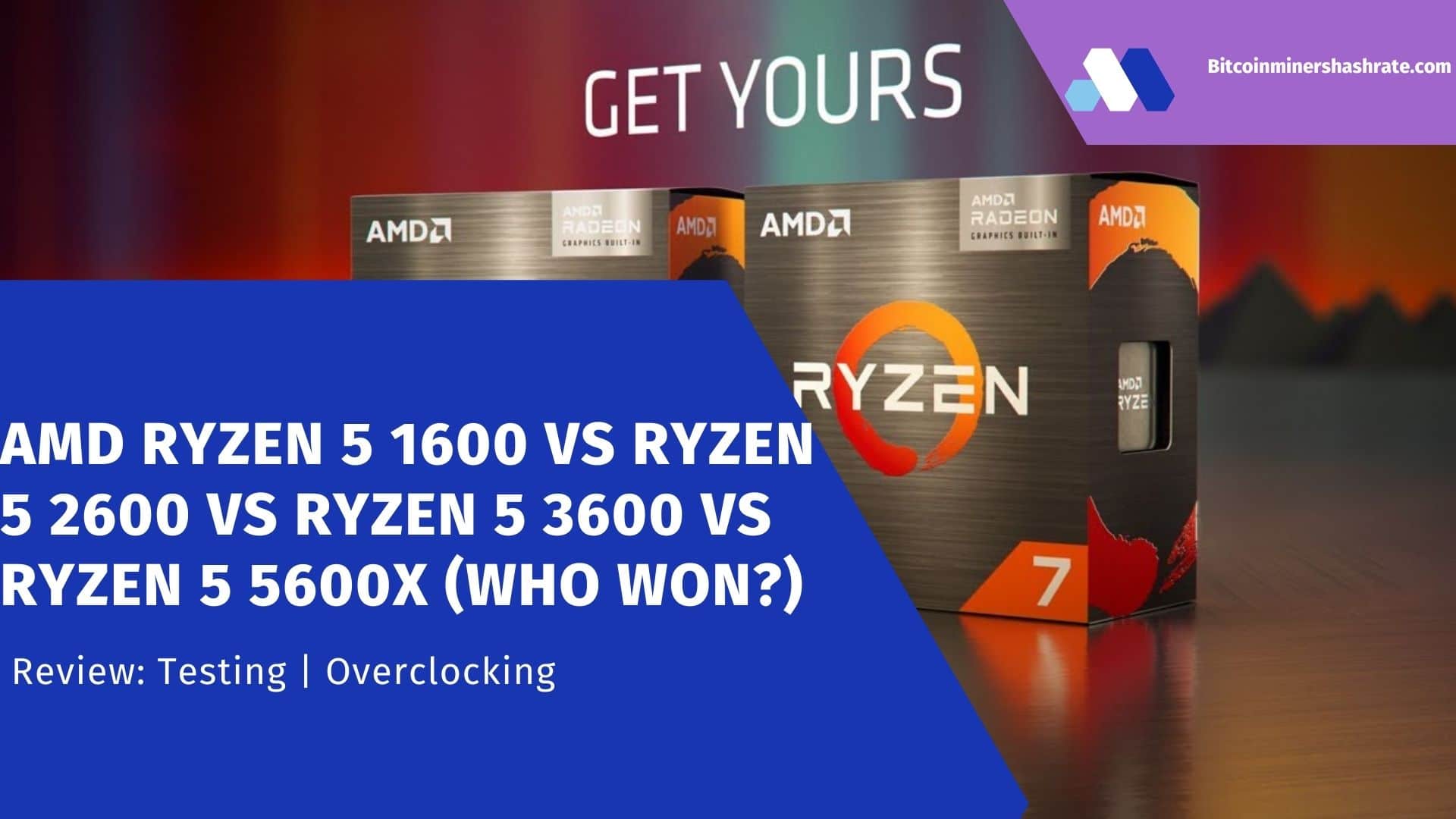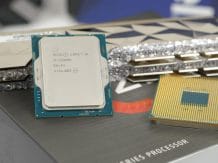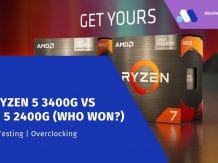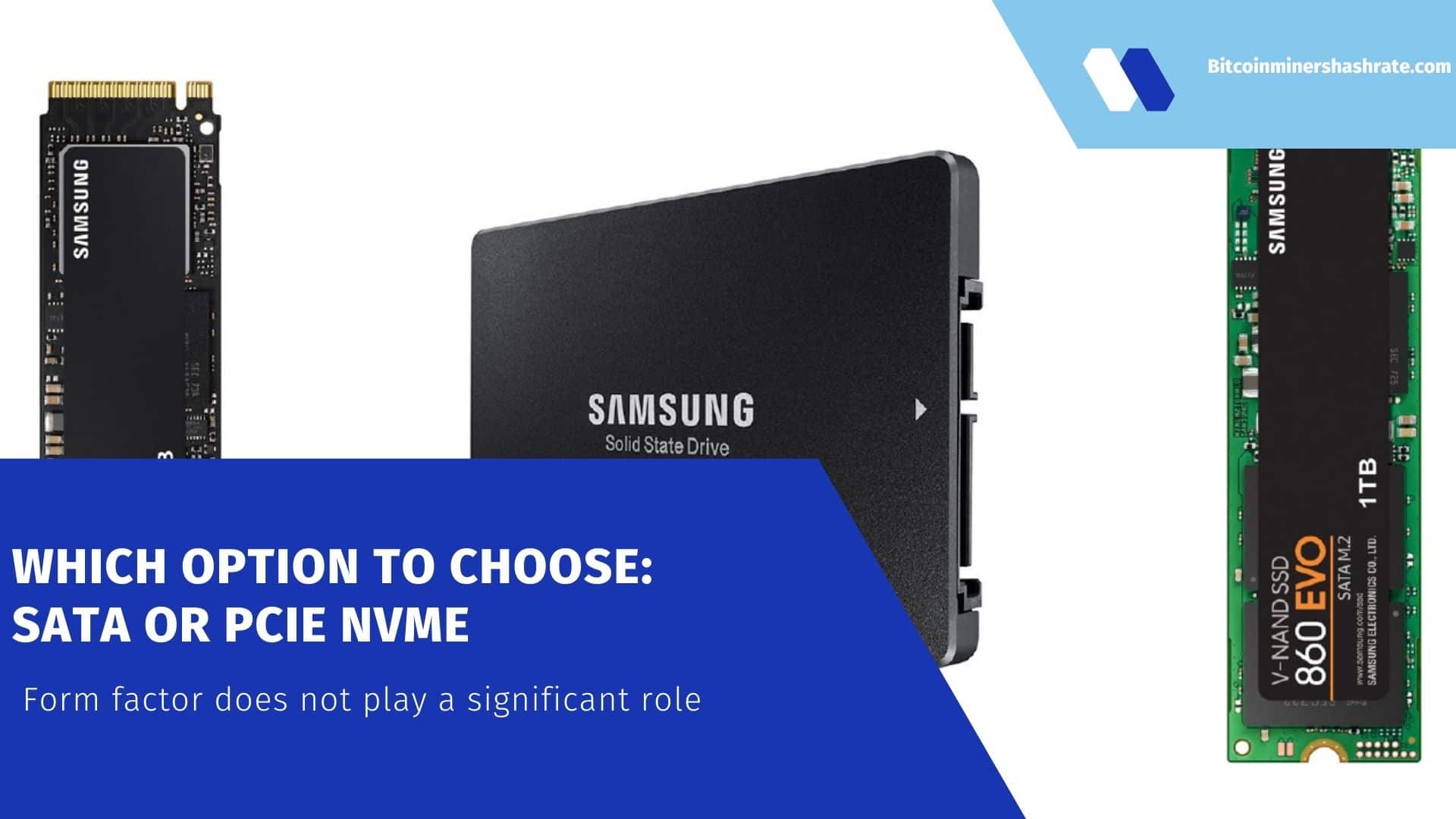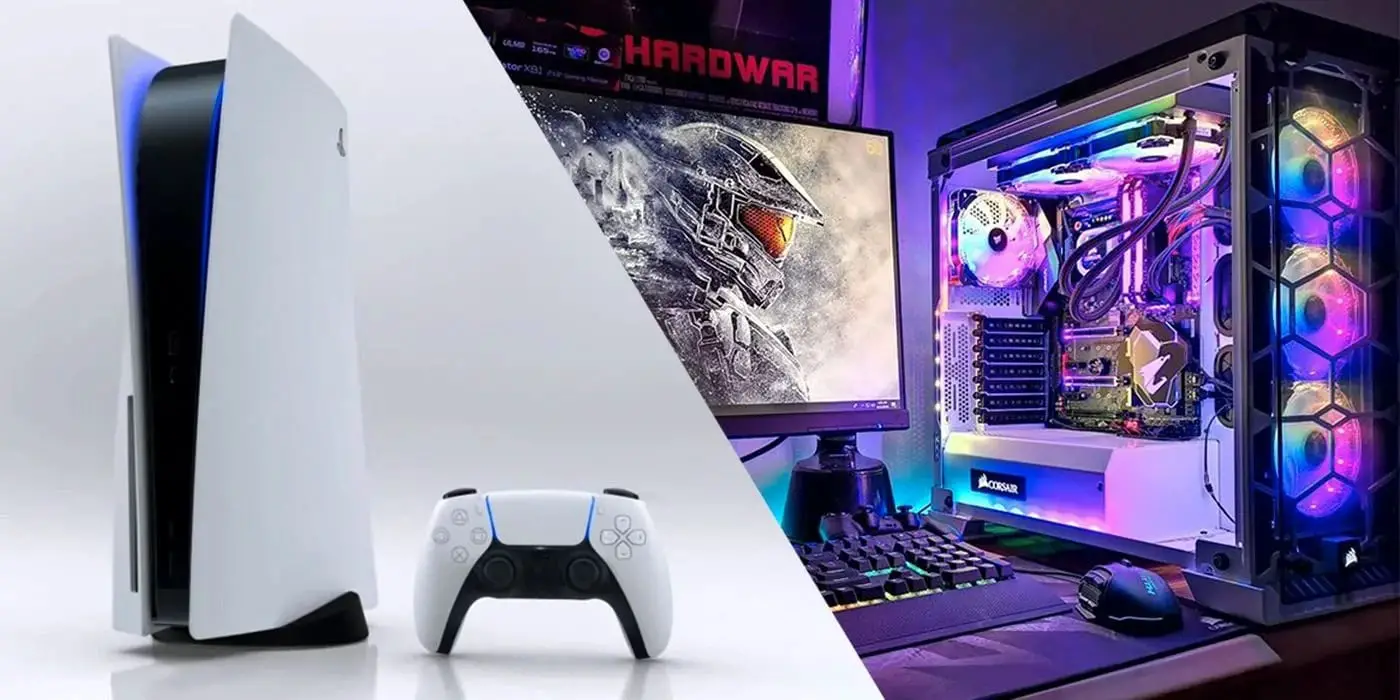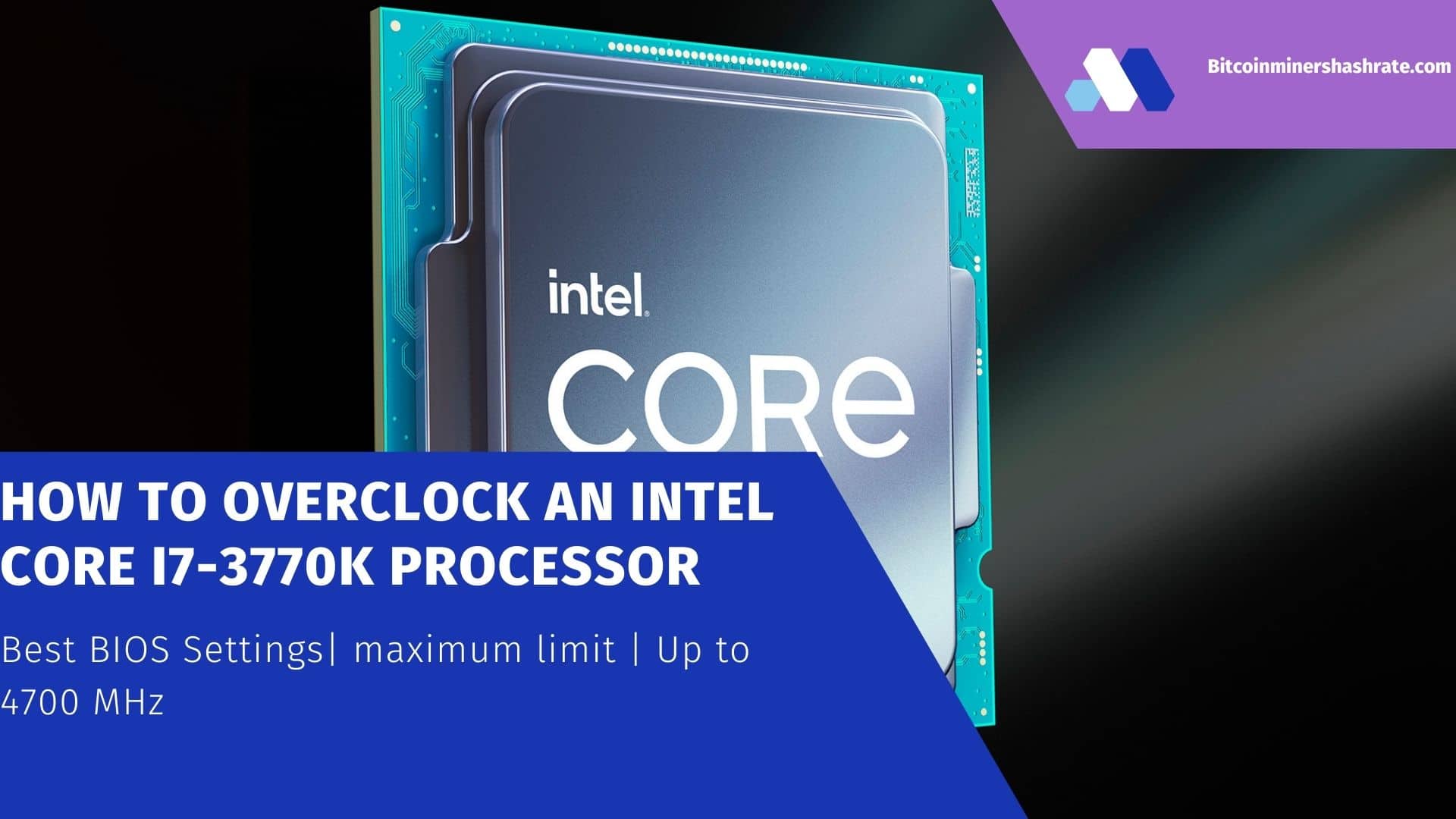AMD Ryzen 5 1600 vs Ryzen 5 2600 vs Ryzen 5 3600 vs Ryzen 5 5600X: Review /Benchmark /Overclocking – Tests of 4 generations of AMD Ryzen 5 processors in stock, overclocking and with emphasis on the video card
It’s time to follow the progress of the most popular and balanced Ryzen 600 series processors. Today, let’s look at how they behave in the stock state, in overclocking, and even indulge in a comparison at equal frequencies.
As many as 4 generations fit in one socket, and that’s not counting the APU!
AMD Ryzen 5 1600 vs Ryzen 5 2600 vs Ryzen 5 3600 vs Ryzen 5 5600X: test stand
- Graphics Card #1: INNO3D GeForce RTX 3080 ICHILL X3
- Processor #1: AMD Ryzen 7 1700
- Processor #2: AMD Ryzen 5 2600
- Processor #3: AMD Ryzen 5 3600
- Processor #4: AMD Ryzen 5 5600X
- Motherboard #1: MSI B450-A PRO
- Motherboard #2: ASRock B550 Taichi Razer Edition
- RAM #1: Crucial Ballistix 2×8 (BLS8G4D30AESCK)
- RAM #2: G.Skill TRIDENT Z RGB [F4-3600C16D-16GTZR] 2×8 GB
- Cooling system: Gamer Storm CASTLE 360RGB v2
- Storage: SATA Samsung 860 EVO 500 GB x2
- Корпус: Open Stand
- Power Supply: DEEPCOOL DQ850-M-V2L
Unfortunately, most motherboards with the 300th series of chipsets did not receive support for the 5000th line, which is why not everyone got the opportunity to upgrade. More precisely, not only everyone, few people can do it.
And since we are talking about motherboards, then we will begin our acquaintance with the test bench with them. ASRock B550 Taichi Razer Edition, although it has all the necessary features to configure any ryzen processor, was deprived of support – the first two generations were not familiar to it, so the MSI B450-A PRO MAX was useful for them. Now about processors.
Having mentioned the comparison of all ryzens of the 600th line, we did not leave the opportunity to surprise you with the list of contestants, however, it is worth clarifying a couple of points.
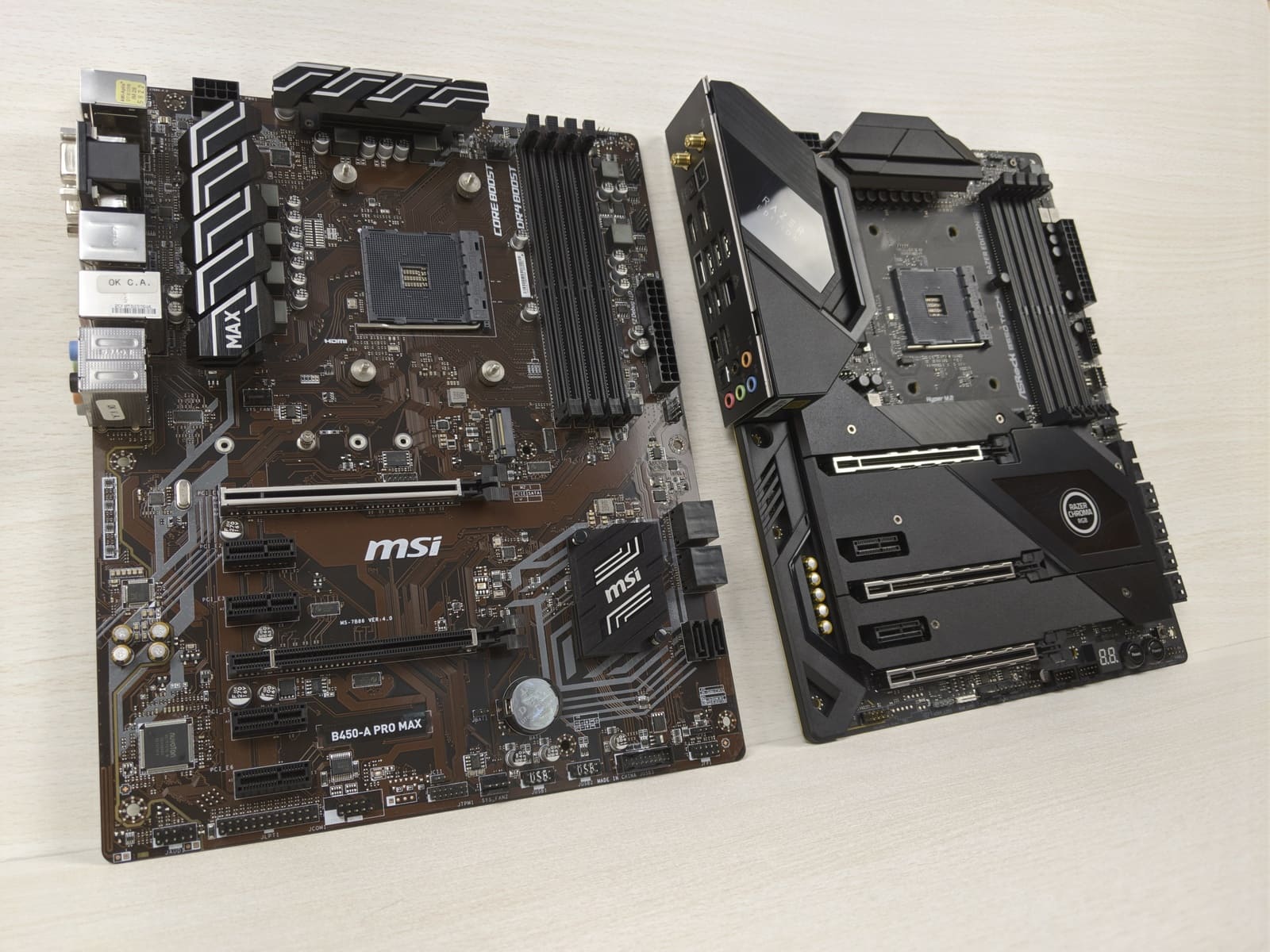
The Ryzen 1600 was imitated from the 1700th by disabling a couple of cores, since this has no negative consequences, since the volume of their caches is the same, and the boost per one core worked very badly for the first ryzens, its absence due to imitation will not affect to the result.
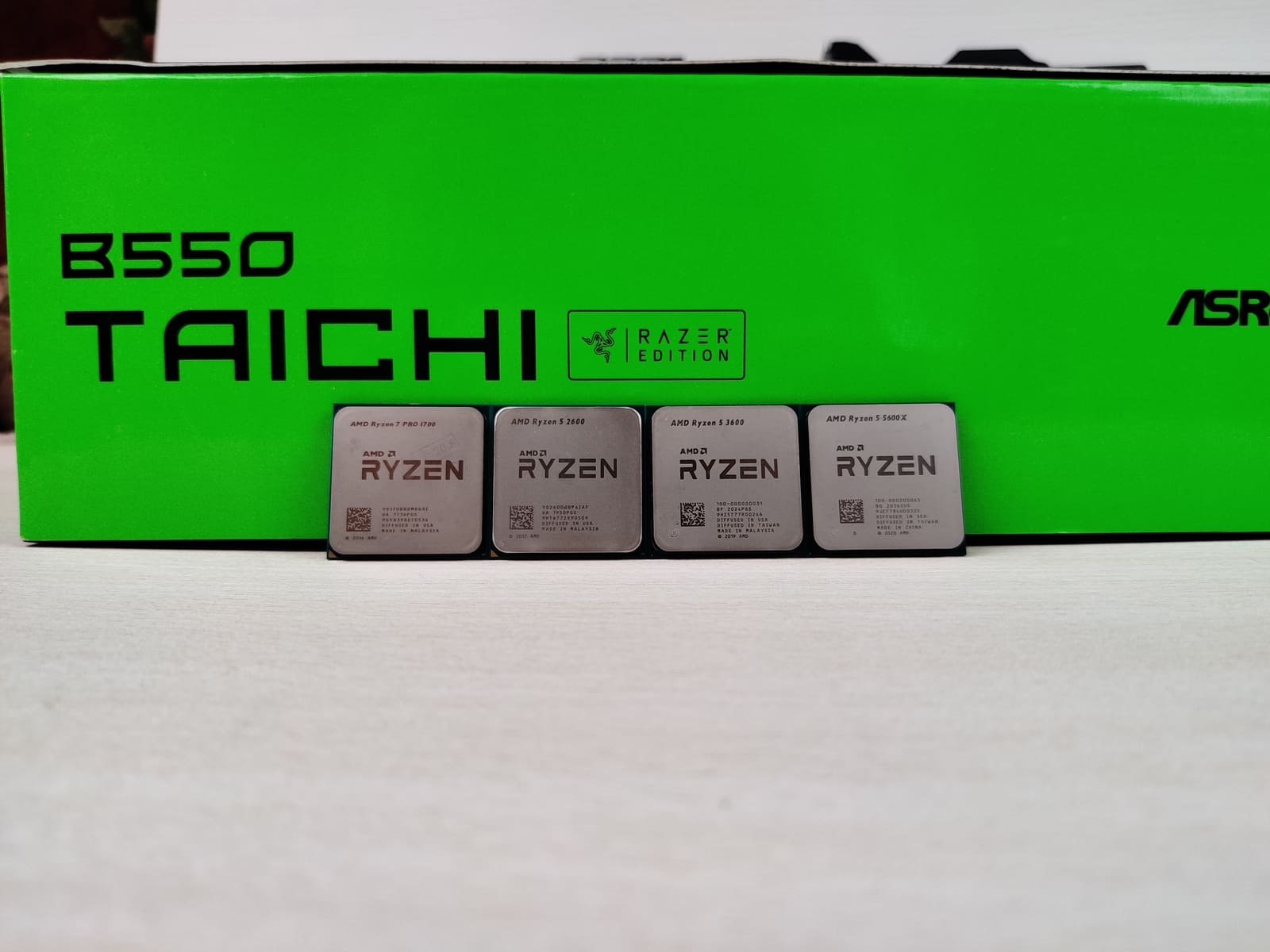
That is, in all cases, we will have the usual versions of the processors. 1600 AE, not AF, 2600 also without huge potential, like 3600, which, alas, does not take the cherished 4.5 GHz.
Stock tests
We will start from the drain, and for processors of the zen and zen + microarchitecture, the XMP frequency of 3600 MHz of our RAM modules on SAMSUNG B-die chips is too high, so we will also postpone them until overclocking, and use the XMP of ordinary ballistics, which do not need to be introduced . All processors will be cooled by CBO Gamer Storm Castle 360RGB v2, RTX 3080 INNO3D ICHILL X3 was used as a graphics accelerator. The whole thing will be powered by a DeepCool DQ850-M-V2L power supply.
Progress with each new generation is not as simple as that of Intel. The Ryzens did not add cores or hyper-threading while maintaining the same microarchitecture. No. Let’s make a small table for convenience.
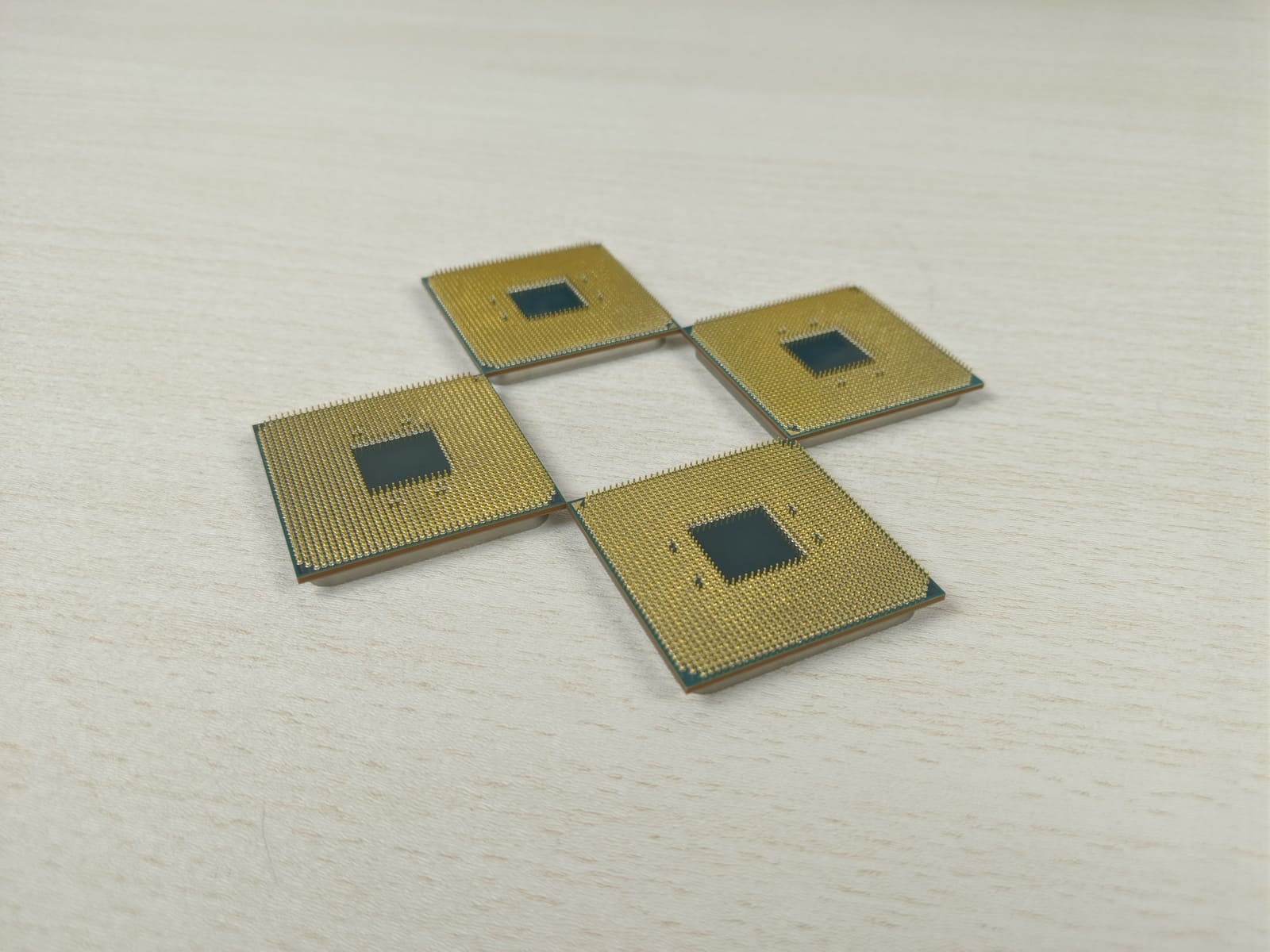
Wiping a mean tear, we turn to synthetics.
In the R23 bluebench, the Ryzen 5 3600 made the largest performance jump in a generation. It outperformed the 2600 by 25% in single-thread and by 33% in multi-thread. 2600, in turn, showed the least progress.
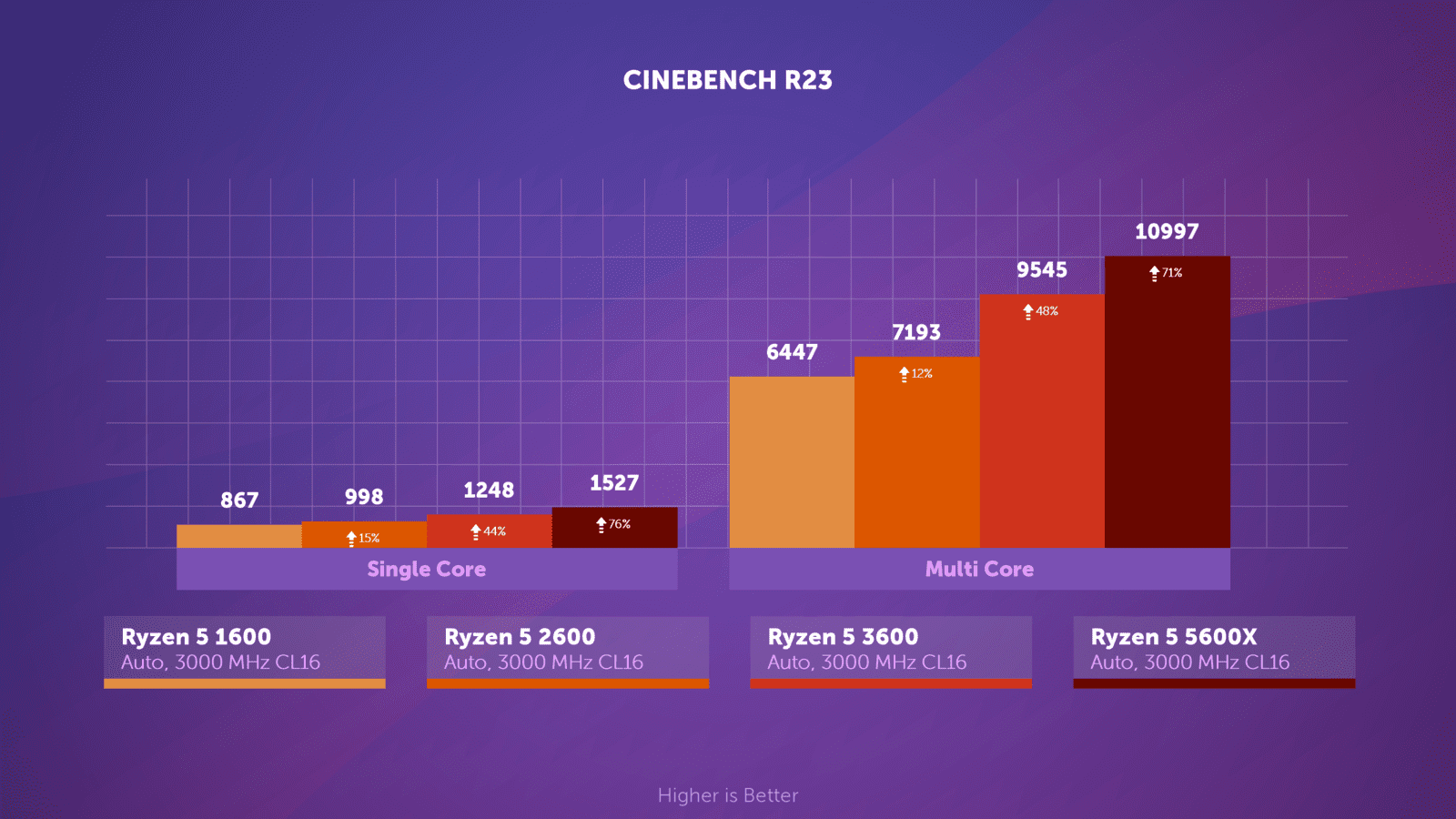
In Geekbench, the gap between processors has been greatly reduced. If in the bluebench the 1600 and 5600X differed by more than 70%, now this number has decreased by more than 3 times for the test in multithreading.
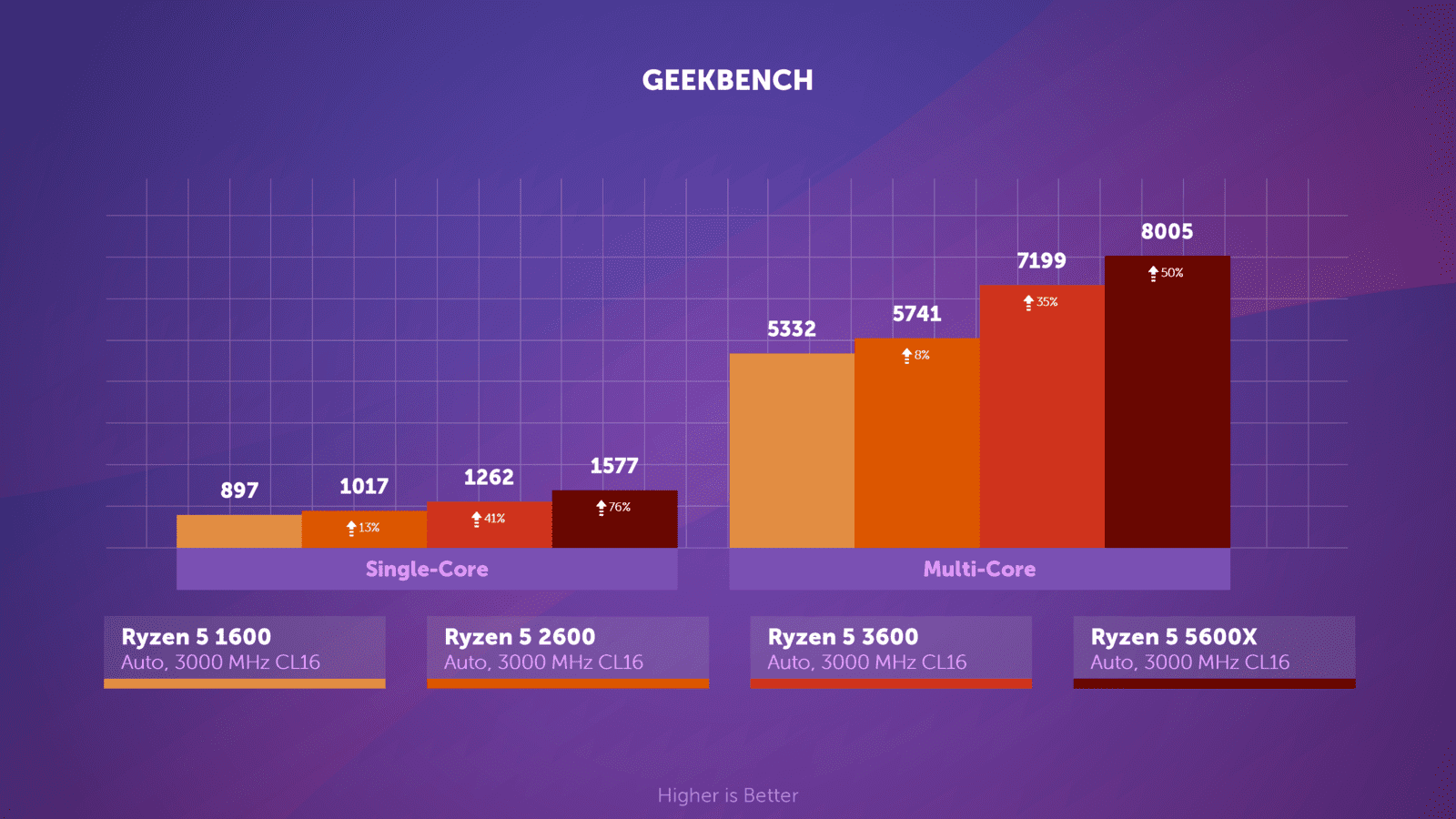
CPU-Z falls somewhere in between in terms of sensitivity to changes in core performance.
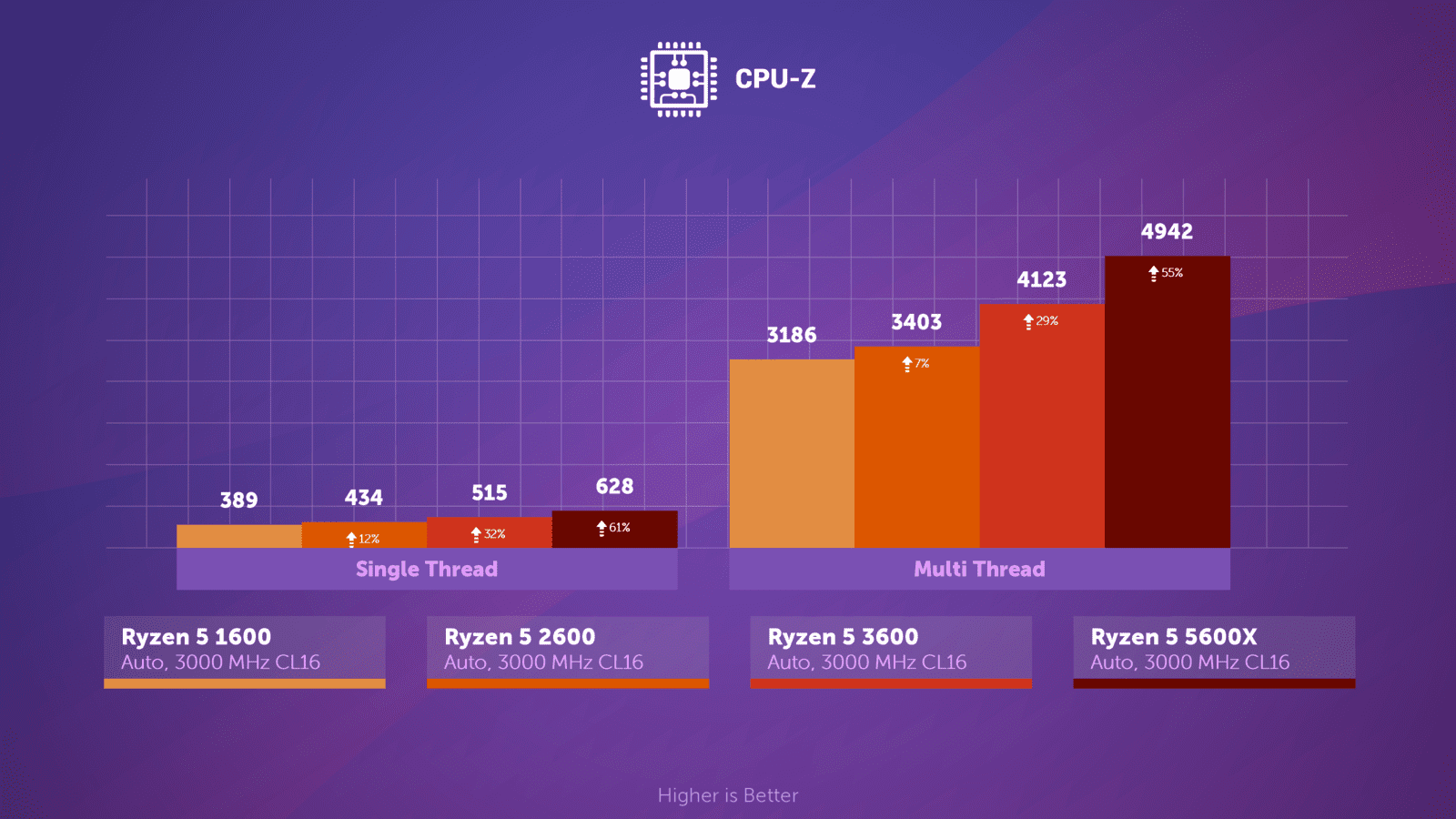
At the same time, in Blender’s koro benchmark, the jump in Zen 2’s performance is amazing. The ryzen 3600 finished rendering the scene 72% faster than the 2600. And this is with the same number of cores and threads!
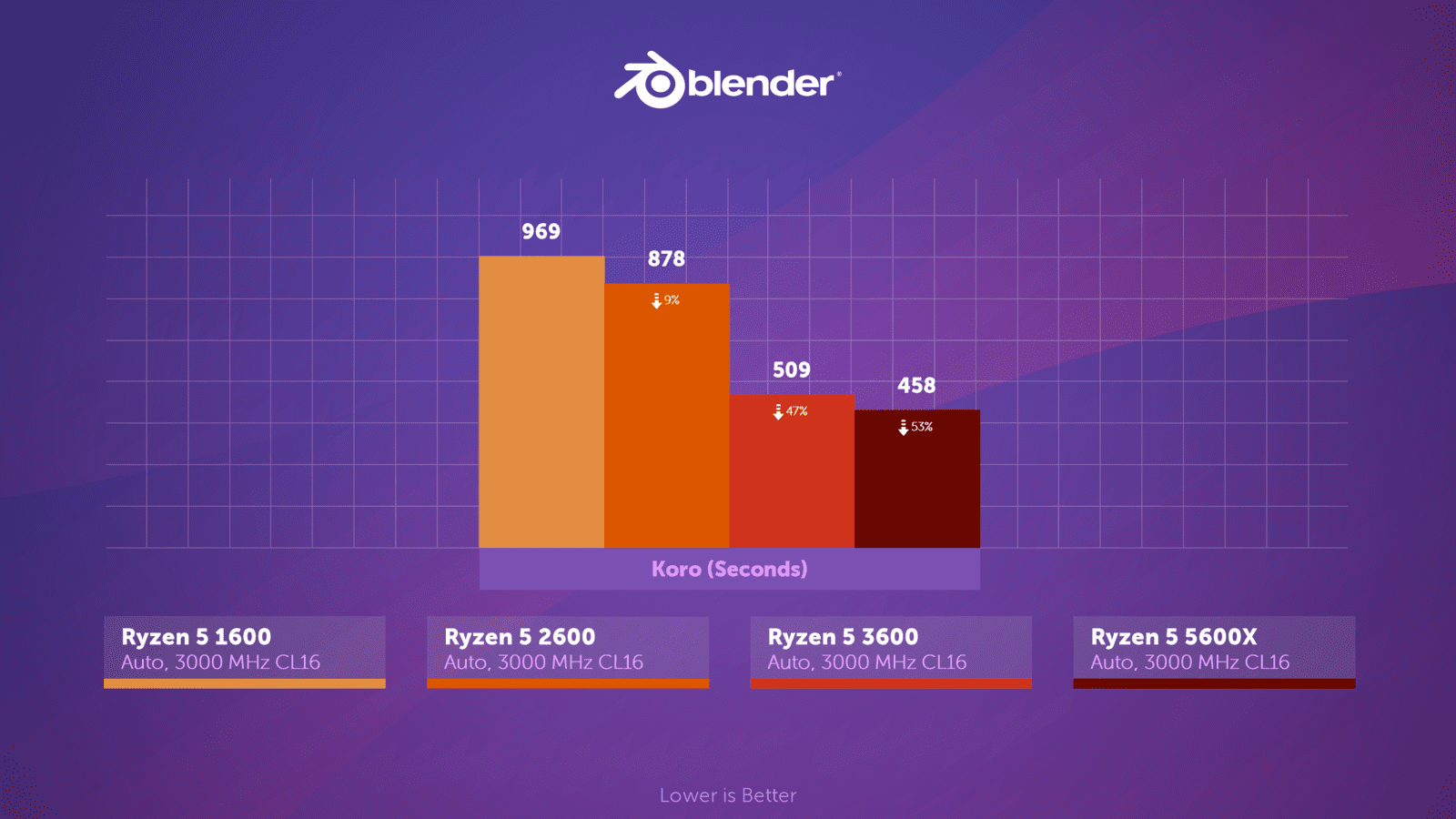
With regards to the memory test and the caches of Aida, there were ups and downs here. For example, 1600 and 2600 practically do not differ either in cache speed or in memory speed, however, delays on all fronts are much lower in 2600. At 3600, memory latency increased again, but the speed of the first-level cache, and the rest, too. There were also features with the speed of writing to memory, which also passed to the 5600X. On the other hand, the latency has fallen again, but this indicator from Aida is clearly overestimated and has only a relative dependence with real performance.
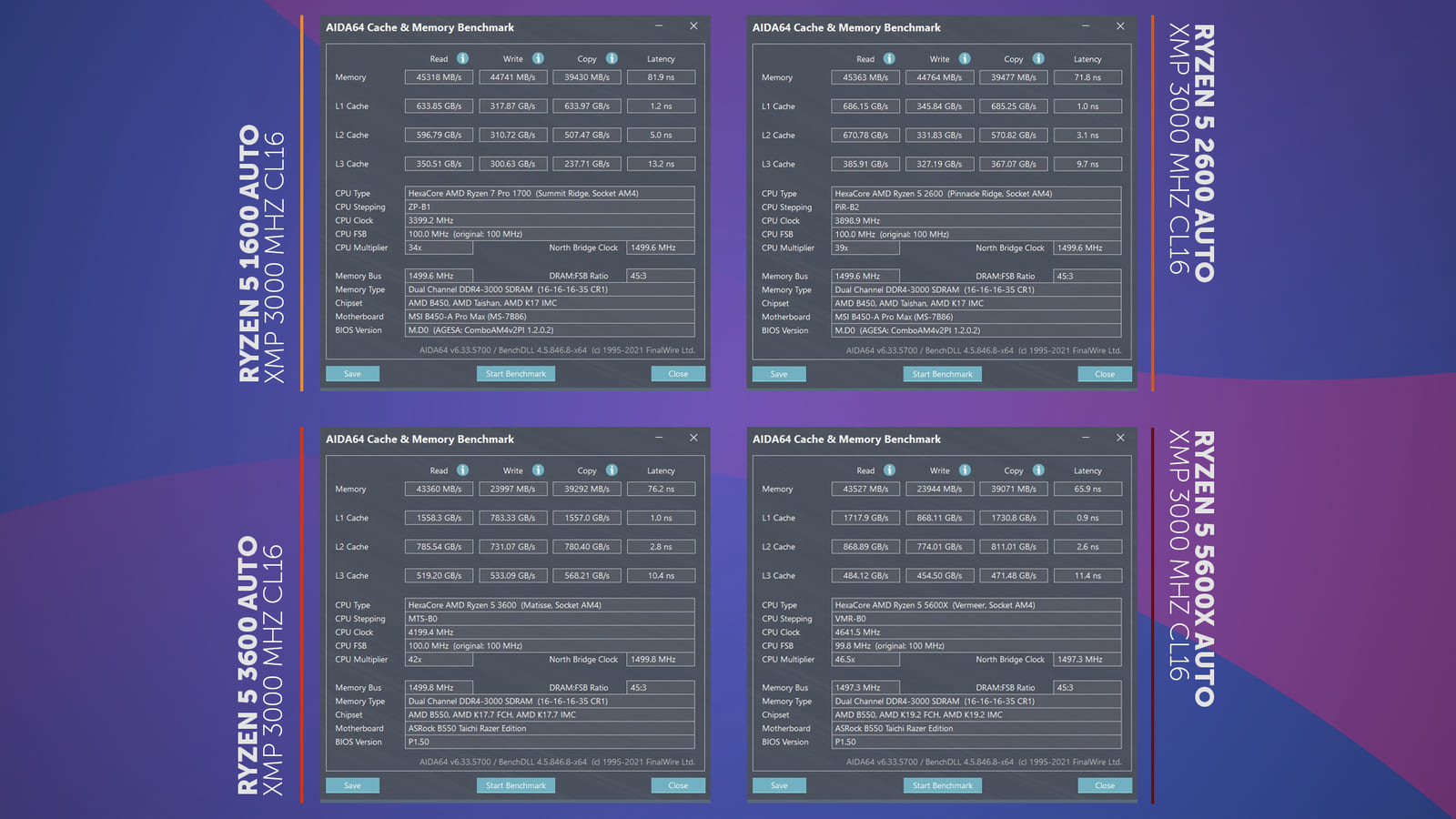
Let’s move on to games. war zone. eSports settings, recording was done with a capture card by a third-party computer. As mentioned, do not rely on the indicators of Hades, because. reducing the memory latency by 10 ns should have given a much larger increase to the 2600th, if you subtract from the 6% advantage the part that the higher frequency gave, there will be almost nothing left. The 5600X made a huge jump in performance, beating the 3600 by 33% while being a quarter faster than the 2600. In all cases, we get decent and stable FPS. But for monitors with a high refresh rate, the left processors in the drain will still not be enough.
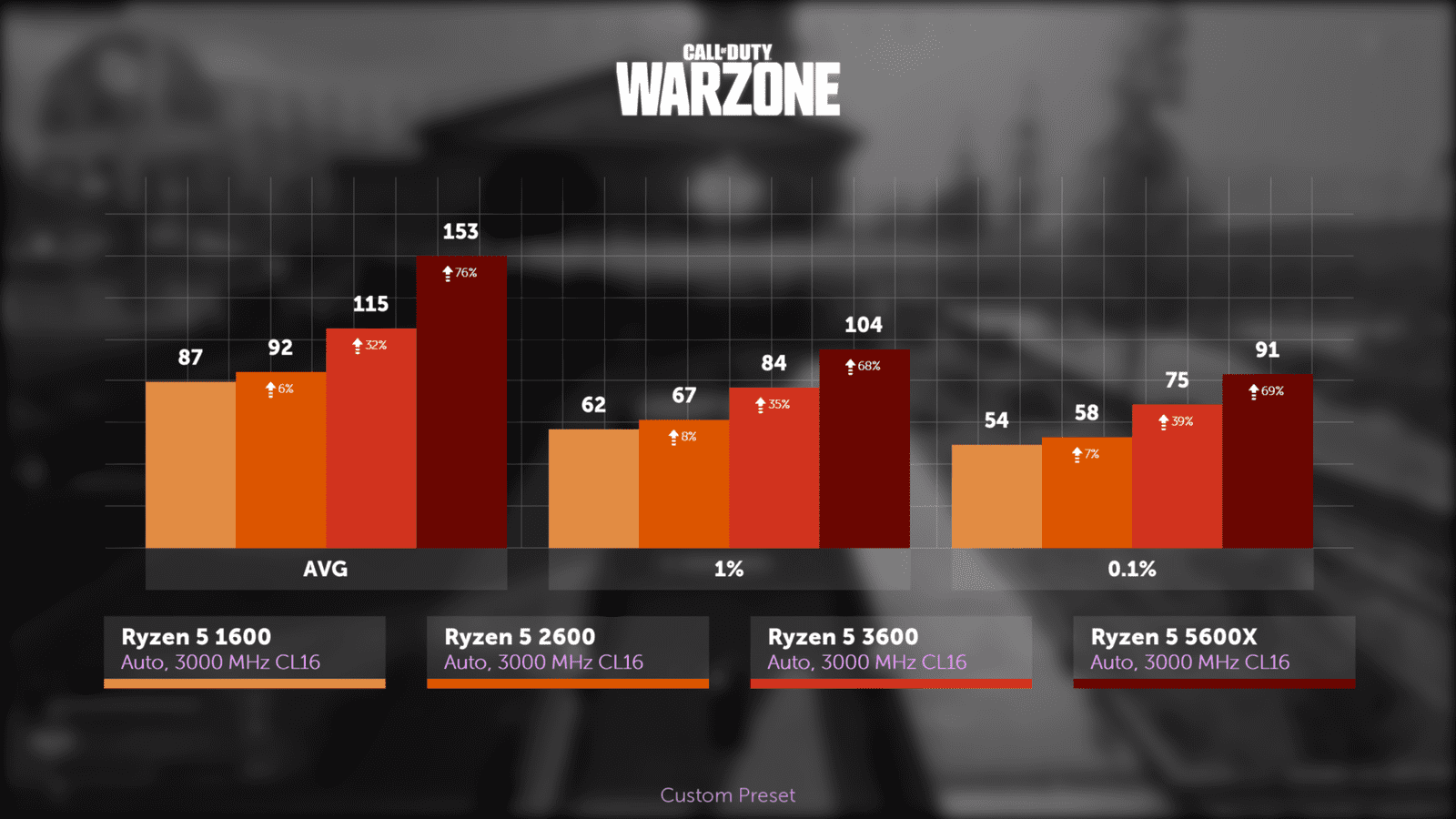
Cyberpunk, ray tracing ultra preset, DLSS – ultra performance, crowd density to the maximum. And at these settings, the processors on the left side of the screen are struggling and are barely distinguishable in essence. The 3600 gives a different experience, almost pulling out 60 frames, but given that even the 5600X dropped to 57 fps at some points, the crowd density should be reduced. As for the performance gap between the processors, after the warzone it decreased, especially for the 5600X. It is now as fast as the 3600 as it outperforms the 2600. 24% on average FPS
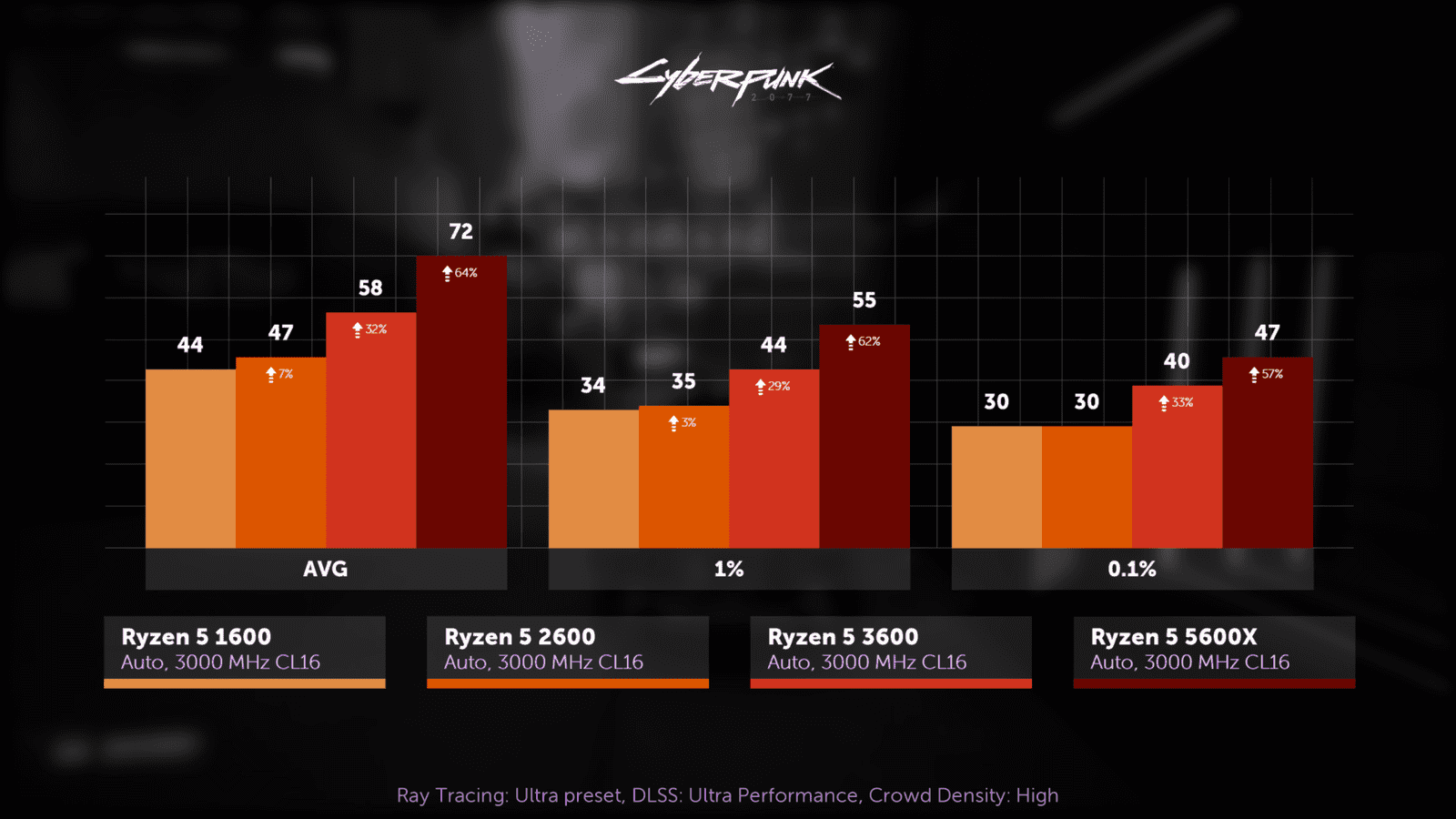
Next is Lara. The preset settings are the highest. 600r, measurement was made only in the third scene. Here again, the 5600X shows a significant lead over the 3600 around 35%, but this was due to the beginning of the scene, at the moment the gap has narrowed to about 25%. 1600 and 2600 differ by a couple of FPS, but here you can pay attention to temperatures. Although energy consumption sensors raise questions, temperatures will not let you lie. 7 nm did their job, greatly complicating heat removal due to the small size of the crystal. That is, even under the water cooling system, the 3600 and 5600 are more than 10 degrees hotter.
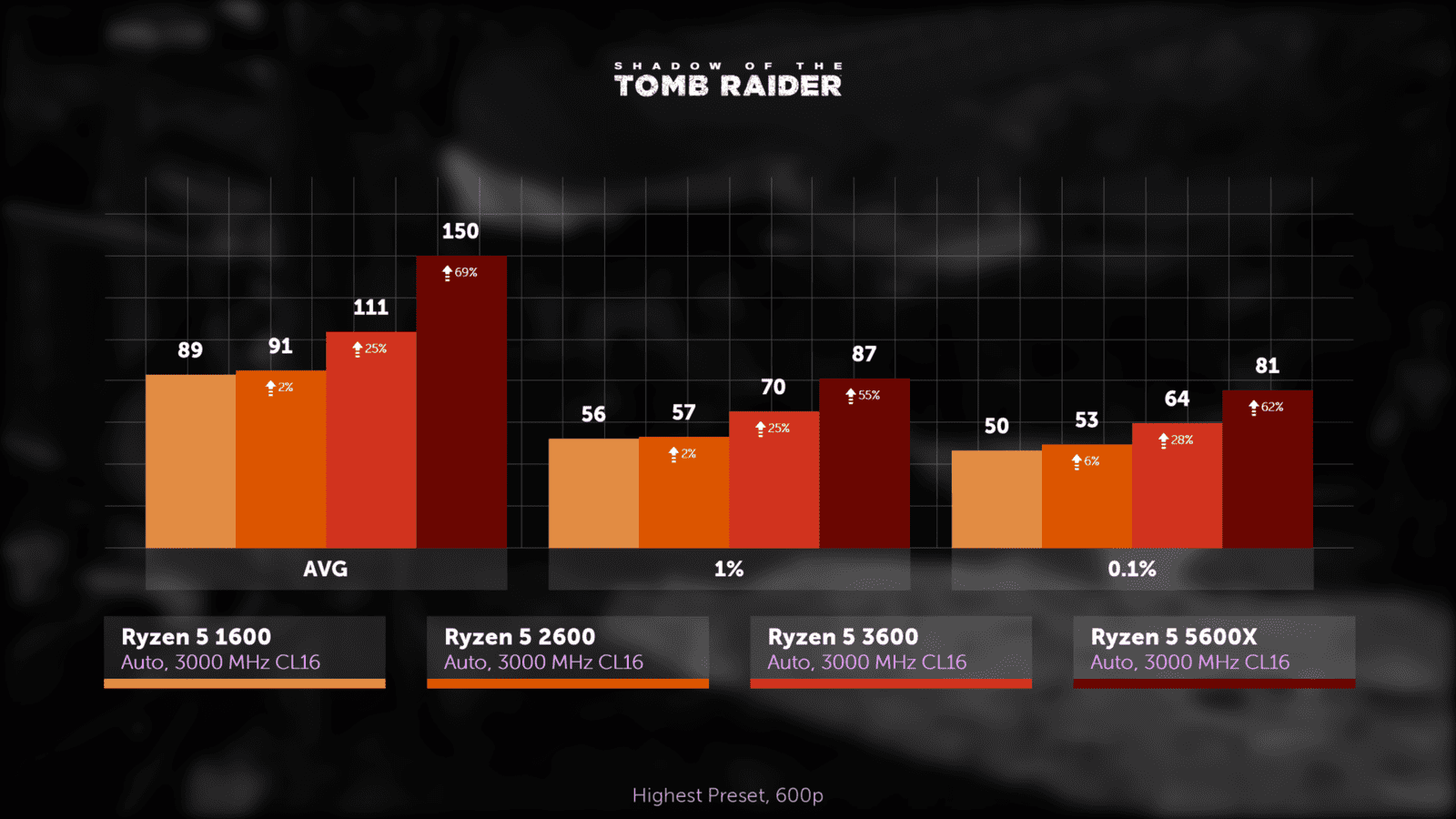
Watch Dogs Legion, ultra preset, performance dlss. We get FPS like in cyberpunk. Only here the beams were not turned on, and the density of the crowd cannot be reduced. For comfortable gameplay on the first two processors, you need either overclocking or a strong decrease in settings, and it’s not a fact that even at the minimum settings there will always be stable 60 frames. In this game, the 3600 showed the biggest jump in performance, beating the 2600 by 29% in average FPS. The 5600X is now only 19% ahead, which is still a great gain in just one generation, but its increased cost isn’t.
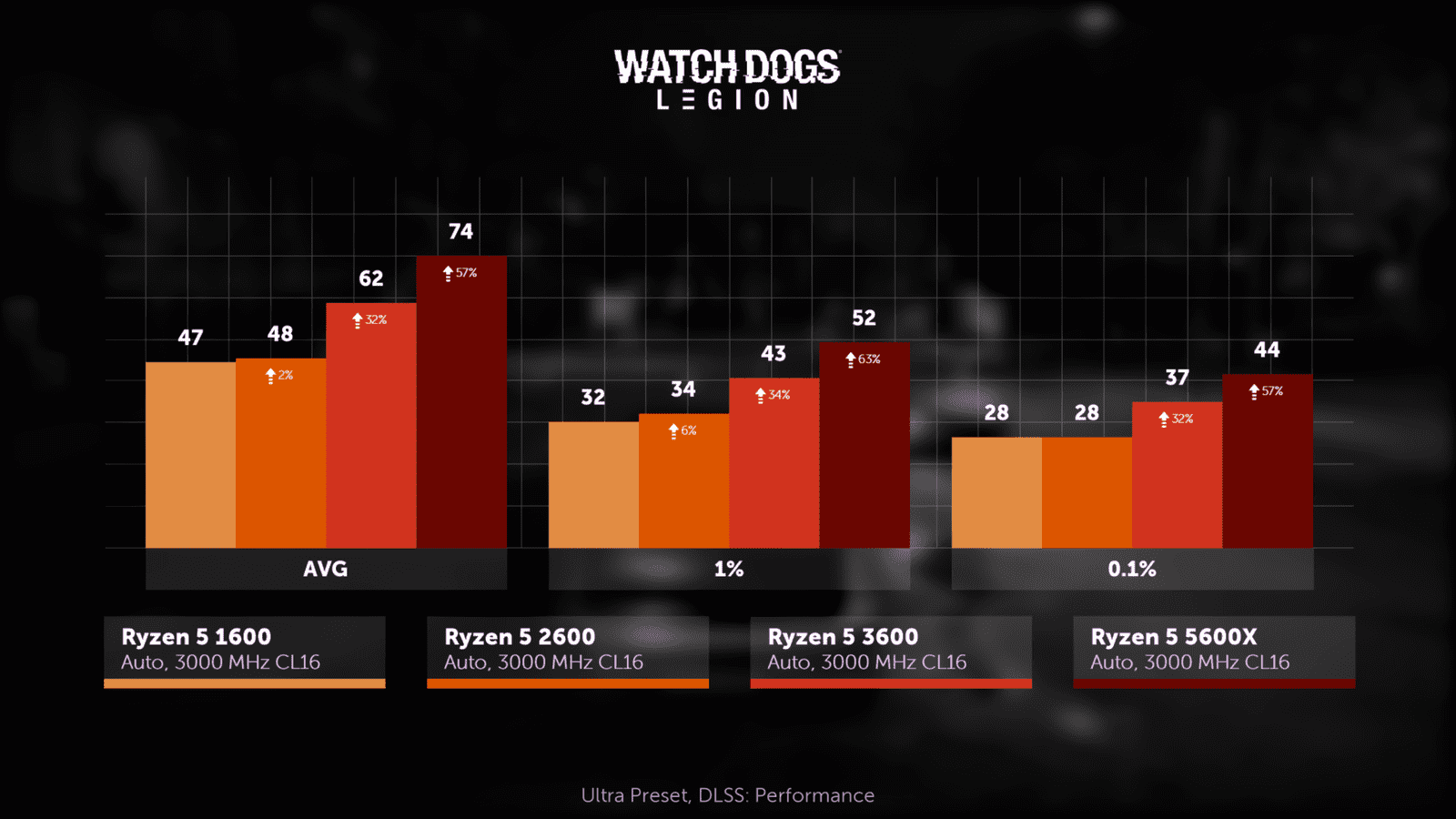
Starcraft 2, all settings to the maximum. When the game is only using 2 cores, the question of their performance becomes more relevant than ever, and the 2600 finally shows a good 14% lead over the 1600 in average frames. The 3600 outperformed it by 31%, and the 5600X leads the way with a whopping 42% lead over second place, making the 5600X more than double the 1600 in the end.
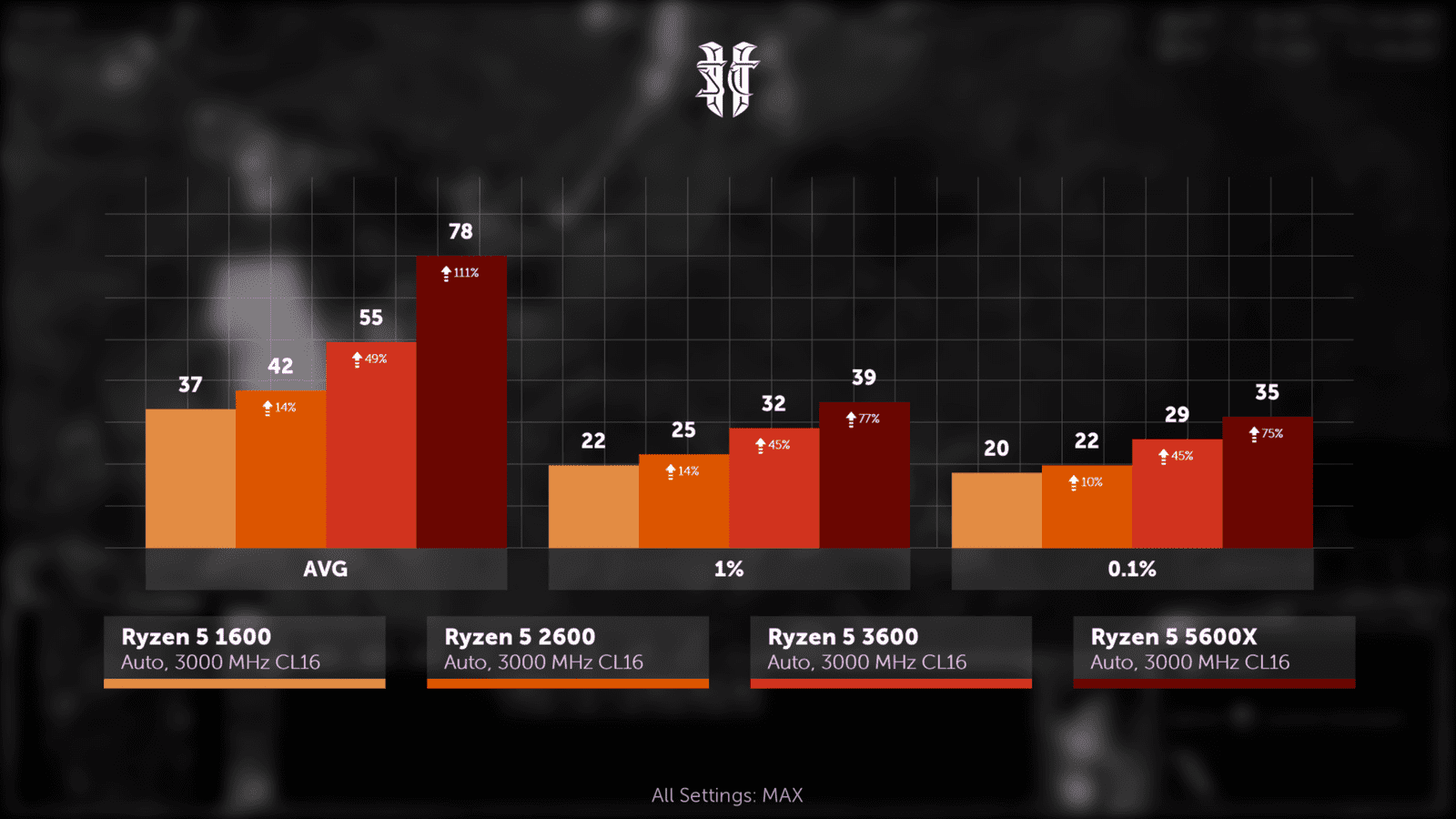
Total War Troy, graphics preset ultra, unit size and grass detail – extreme, resolution modifier – 50%. And now the results are exactly the opposite. That is, in Troy, the difference between processors is minimal. 1600 and 2600 differ by 3% in average fps, 5600X and 3600 – by 18%, and only 3600 retained its usual 25% advantage over 2600. But in one of the indicators it is straight ahead. core temperature. By as much as 20 C, it is hotter than the opponents on the left, and even the 5600X nervously smokes on the sidelines. Fortunately, his tensions are in much calmer limits.
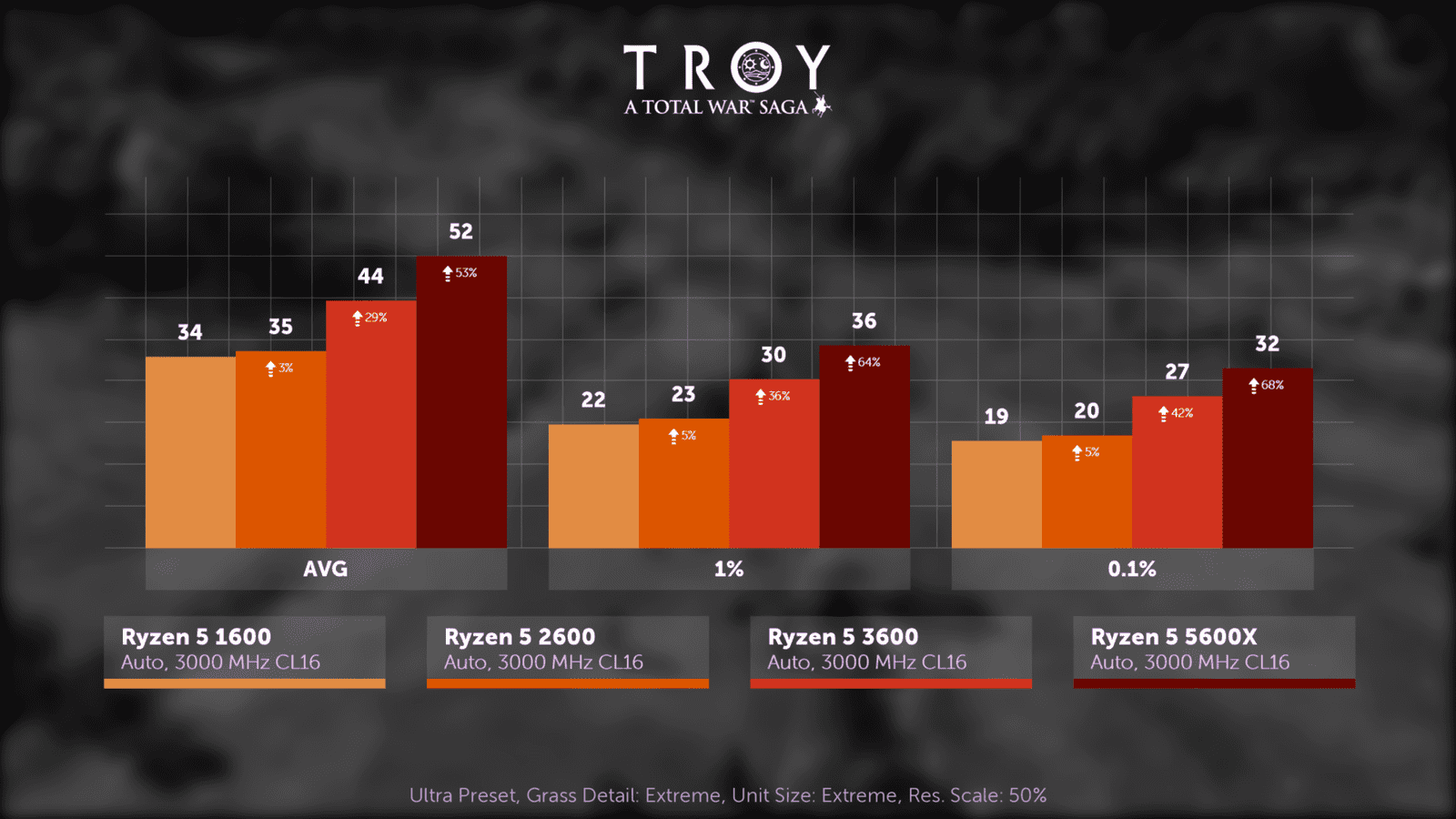
CS:GO. Settings to minimum, anti-aliasing to maximum. As in StarCraft, the 5600X again took off with might and main, surpassing its father by almost 40% and its great-grandfather by 120%. 2600 this time went into a 20% gap from 1600, hinting at the usefulness of the additional payment for oneself. In previous tests, these processors were so similar that at one time the additional payment of a thousand or two did not seem reasonable.
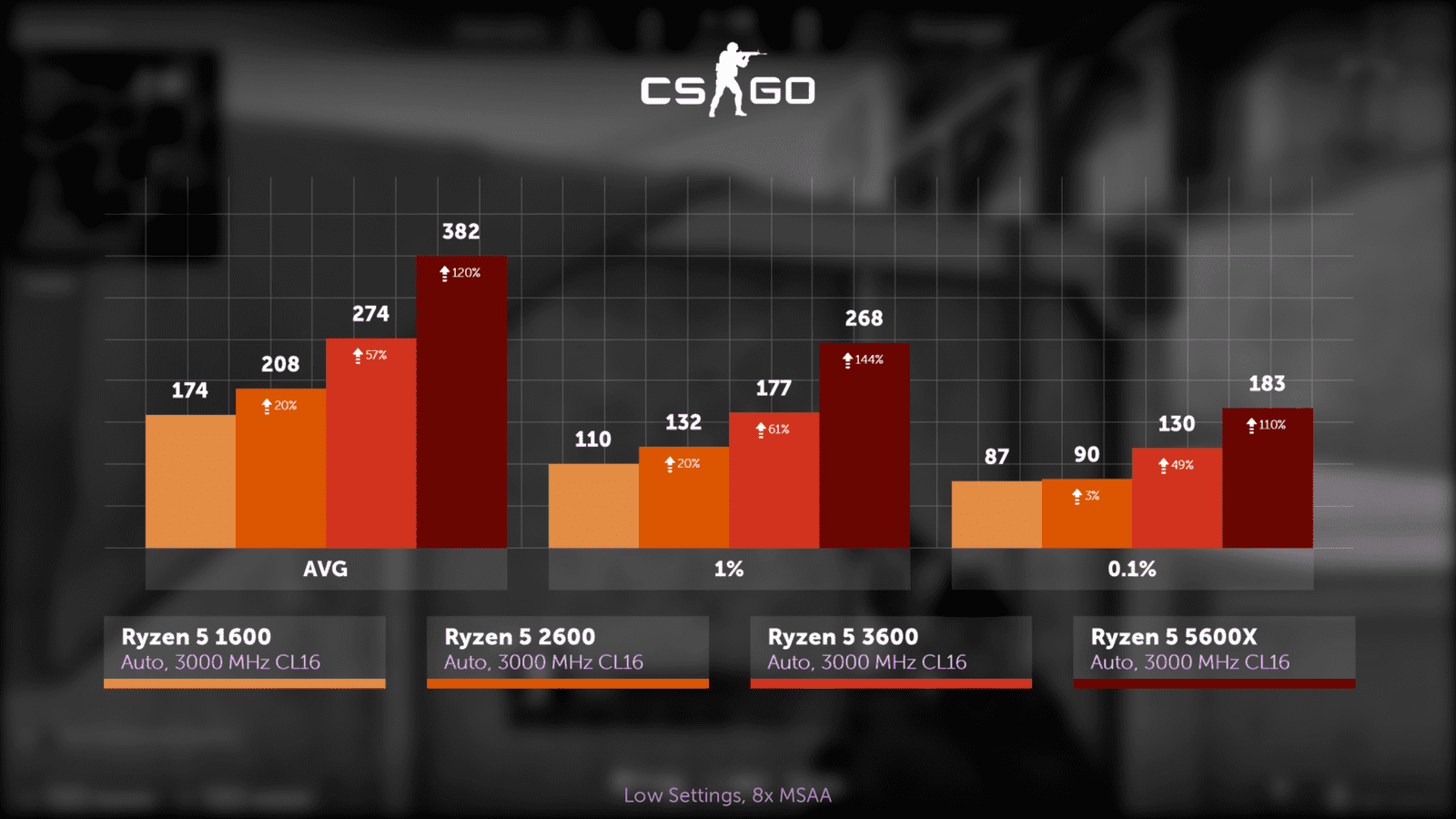
On average, we have fairly even results in the ward in the sense that as far as the average FPS grew, the smaller 1 and 0.1% grew approximately the same. And thanks to the low-flow starcraft with counter 2600, on average, it is 8% faster than the 1600, without them it would have been 4-5%.
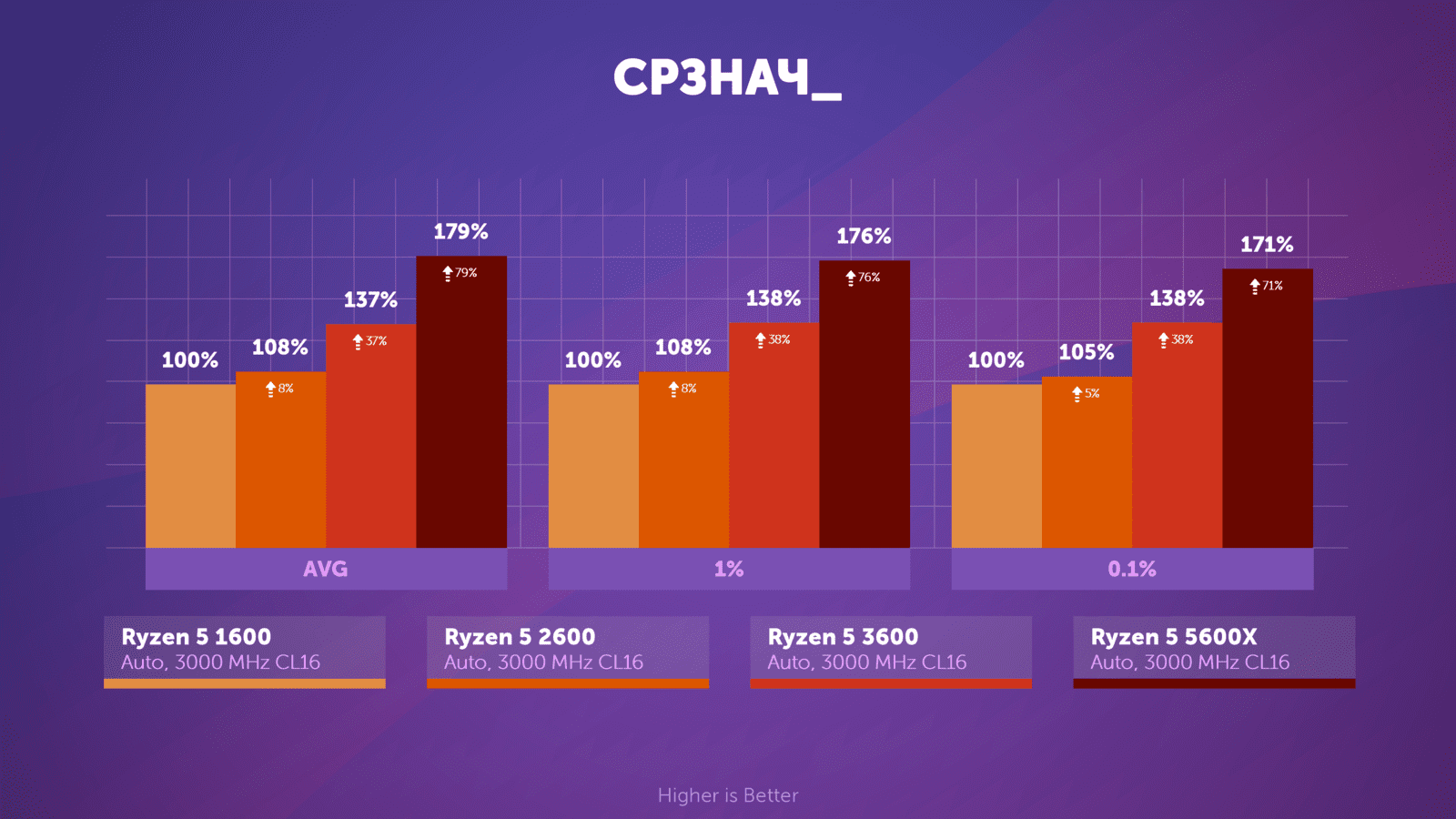
Overclocking tests
Now acceleration. We replace ballistics with bidai, and here everything is according to the usual scheme. 5600X overclocked via Curve Optimizer with removal of all limits along the way, memory is also according to the standard for 3800 MHz bi-dais with the first timing of 14.3866 MHz and higher are unstable, they have already been checked on 4 boards, system errors pop up everywhere.
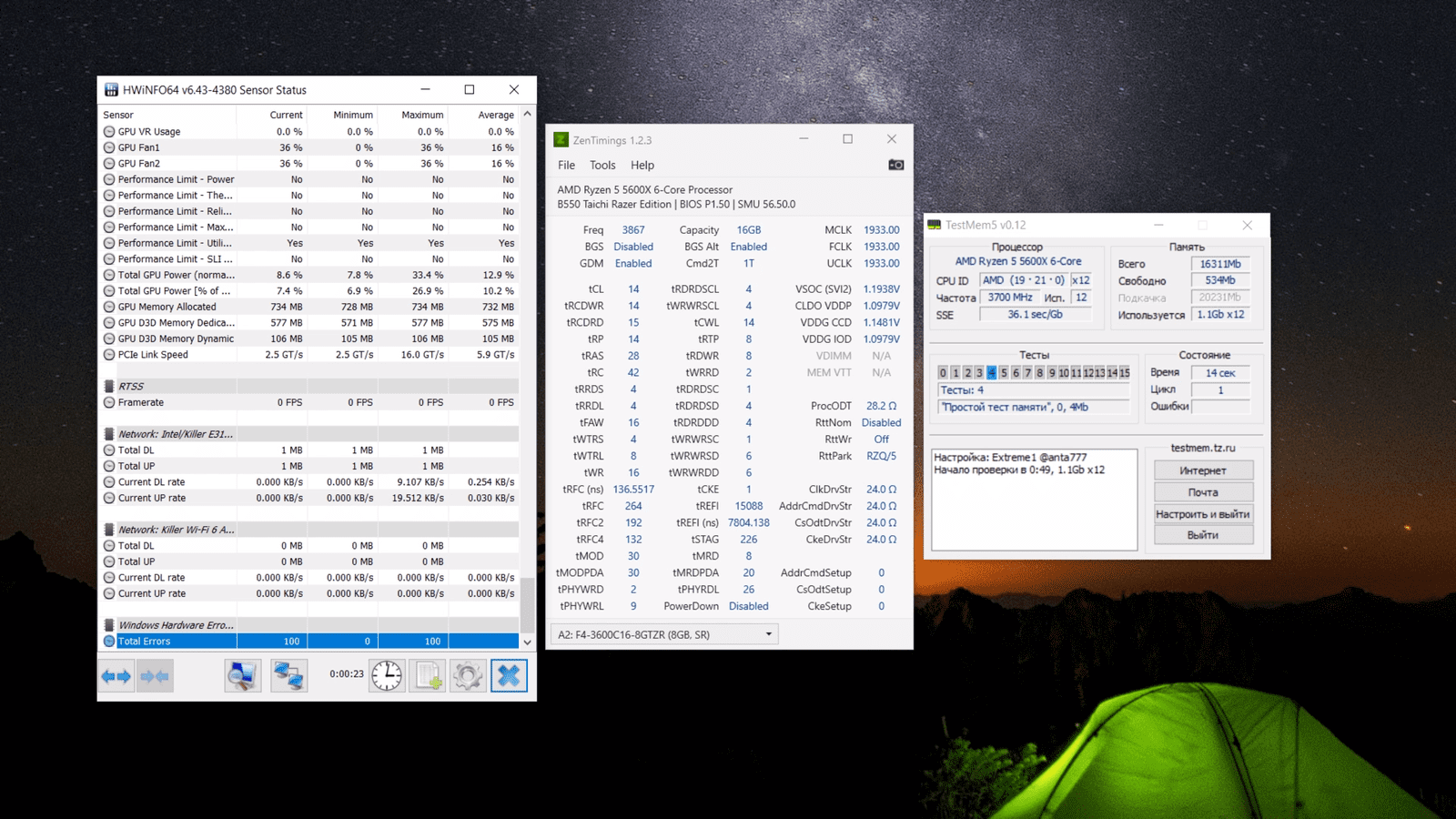
The ryzen 3600 cores are fixed at 4375 MHz, and the memory is configured exactly the same as on the 5600X.
Our 2600 stars from the sky are not enough. 4100 MHz came out by cores, and the best memory setting option is 3333 MHz with the first timing of 12. CL13 is not set, since our modules are unstable with Gear Down Mode disabled, and 3533 MHz CL14 is obviously worse. 3600 MHz and above are not stable on this motherboard.
For 1600, the memory overclocking is the same, and the cores were taken 200 MHz lower at the same voltage. That is, in general, there is an increase in the potential for overclocking memory and cores. Somehow I even forgot how problematic the memory setup was on the first two generations.
In Hades, nothing has changed globally, the ratios of delays, speeds, and the like have remained within the same limits. Except that the L3 speed of the 5600X has grown a lot, which raises questions rather to hell. Well, again we see a much lower latency in 2600 compared to 1600, but from the games we already realized that we need to be careful about this indicator.
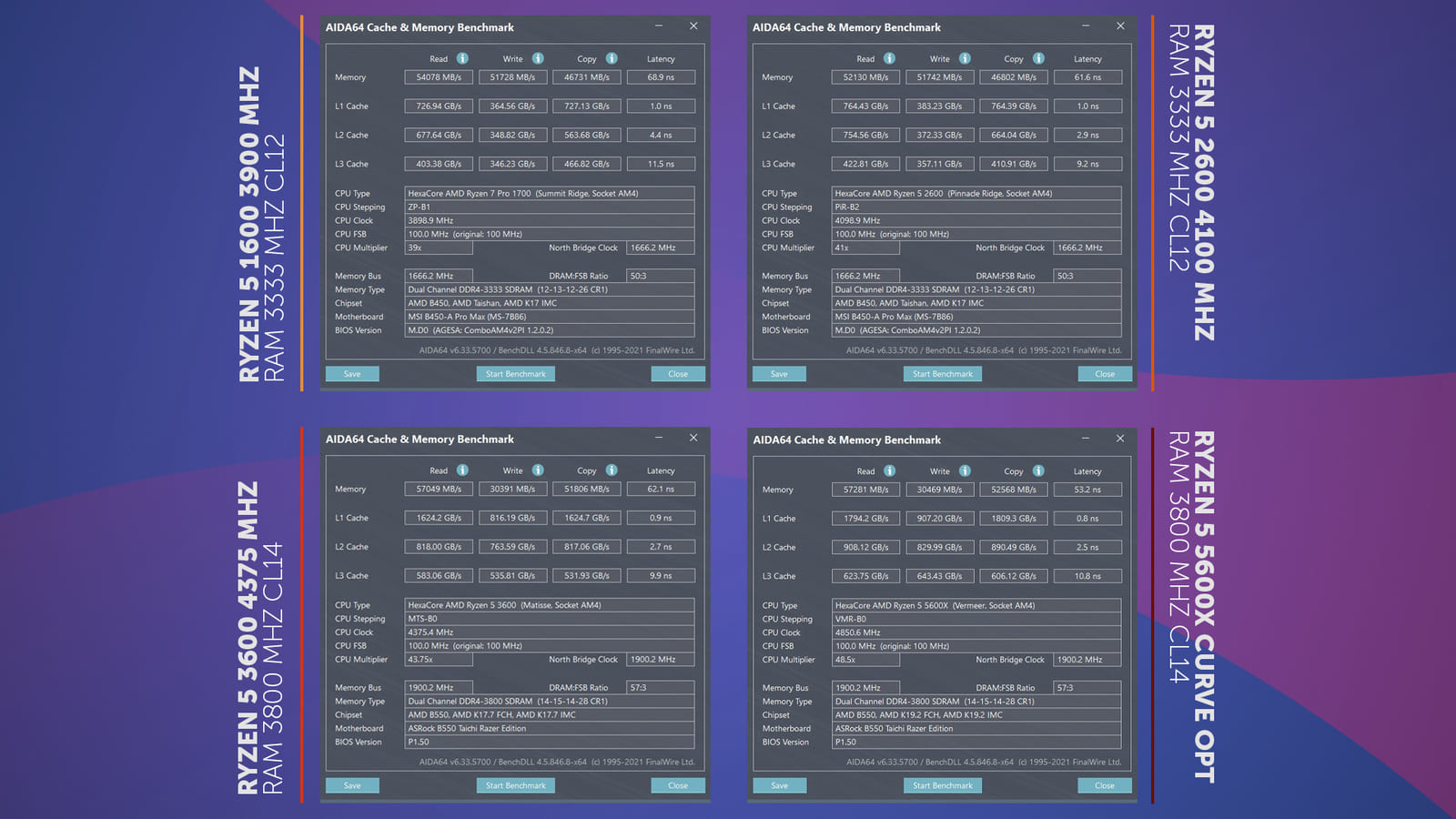
In the bluebench, the Ryzen 1600’s backlog has narrowed. It is not surprising – he increased his frequency the most with overclocking.
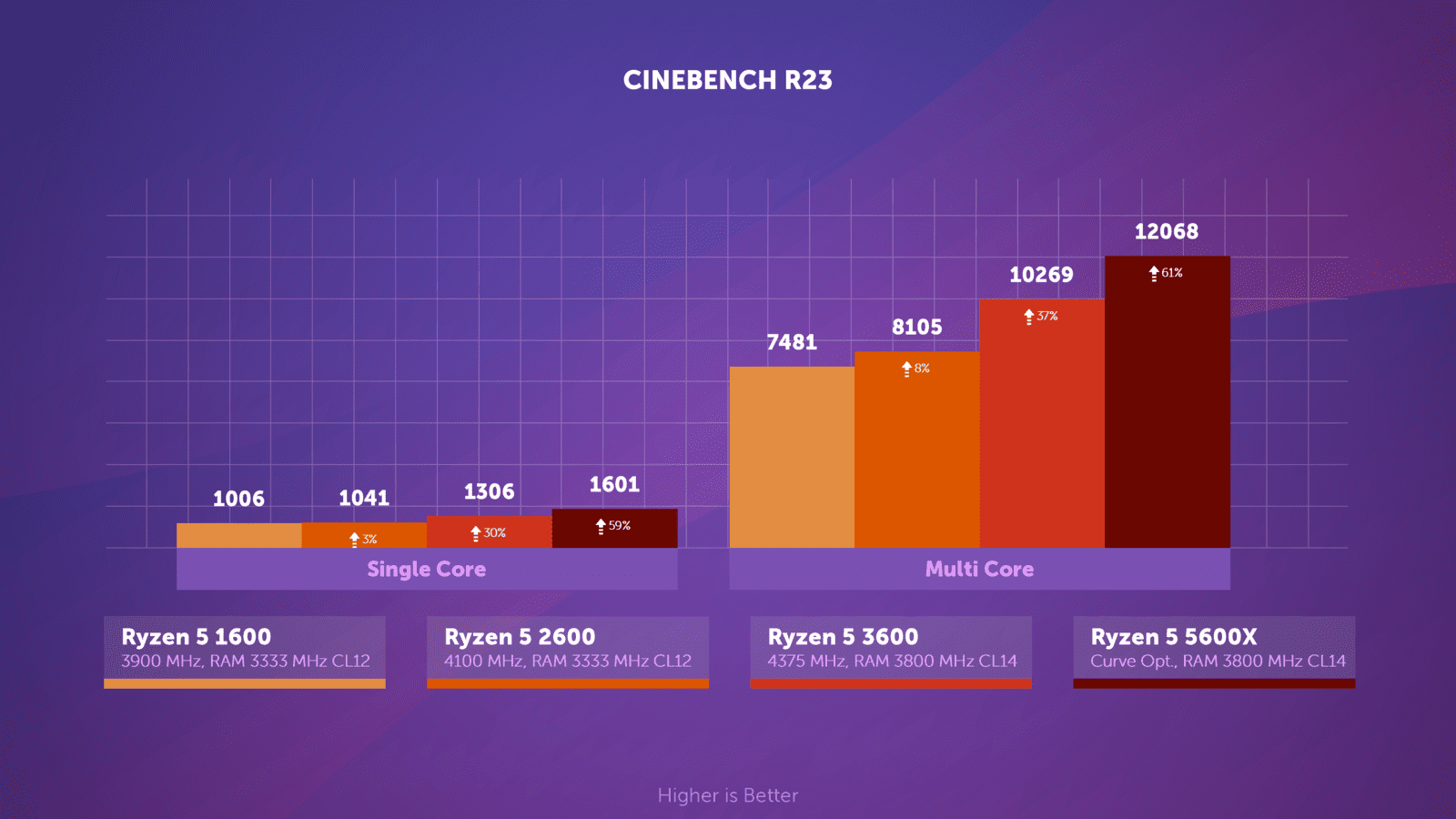
In geekbench and CPU-Z, the same is true, as well as in the blender subtest – koro. The gap has only slightly narrowed. With each new generation, progress is being made in squeezing all the juice out of the processor. Even the ghostly 3300X out of the box had almost maximum frequencies, and now we are comparing overclocking options for 5000th ryzens, although we ourselves understand that we are only squeezing out an additional 200 MHz for show. The main performance boost comes with memory tuning, increasing the frequency of infinity factories and removing limits from the processor.
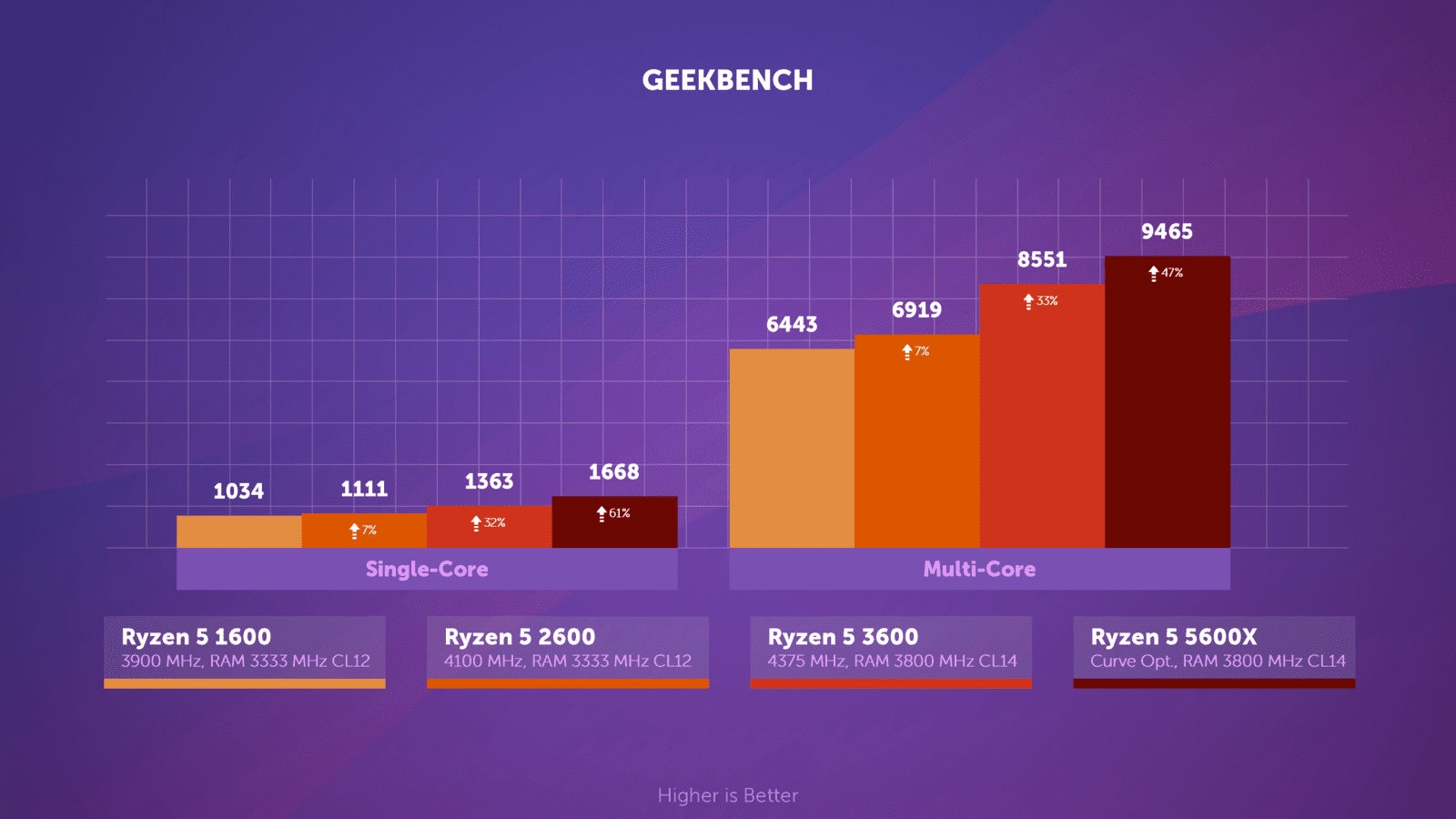

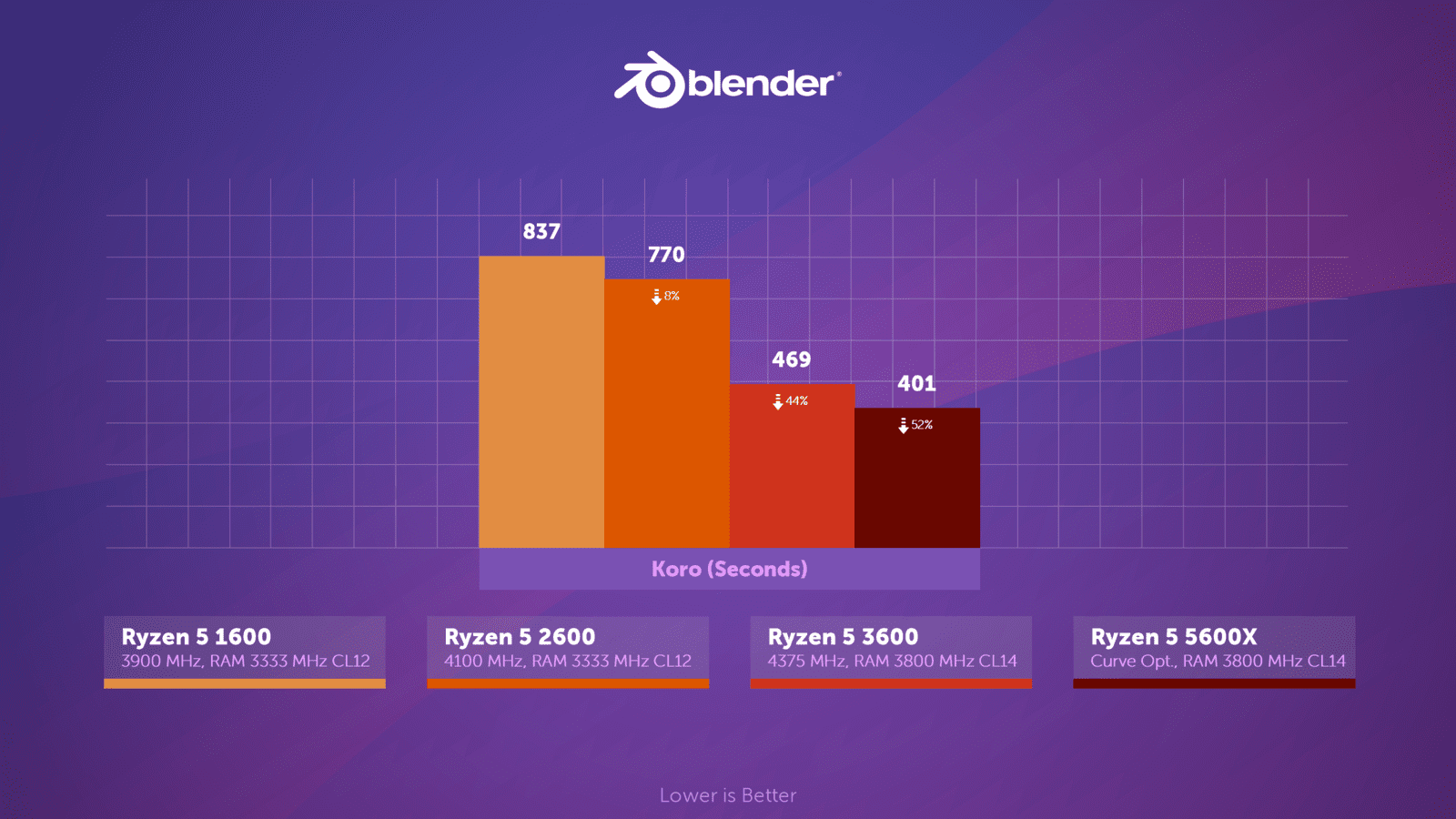
We return to the warzone and see an excellent FPS. And so, it would seem that the 5600X has no core overclocking at all, and a large cache should have reduced the gain from memory overclocking, but the difference with the gain for other processors is not so great. Compared to stock, 5600X accelerated by 22%, and 1600 – by 24%, but this is a warzone, where the error is quite high, we will continue to monitor.
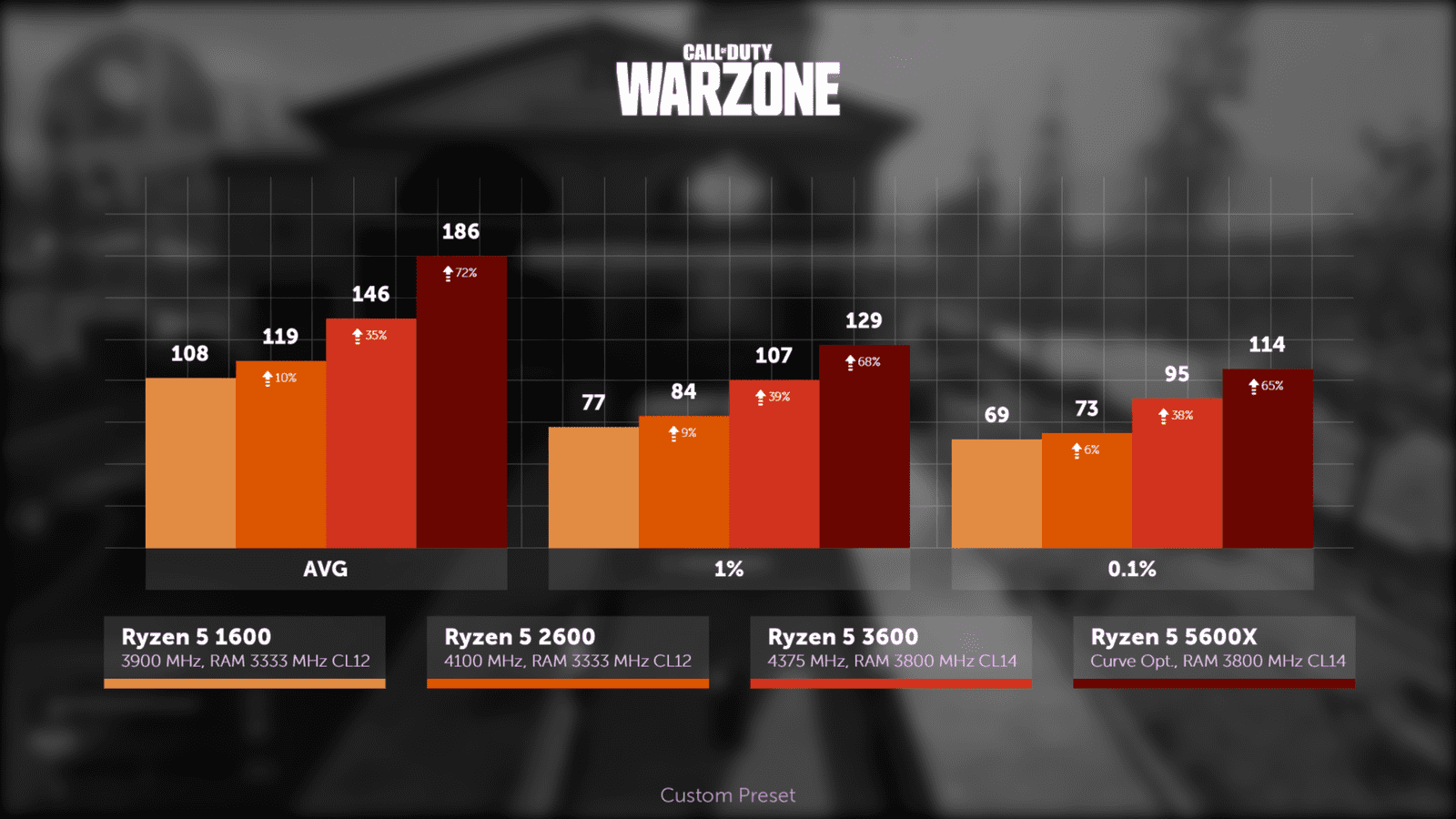
In cyberpunk, overclocking gave noticeably more. And the increase is almost equal. The average FPS has increased by a third in all cases, making the gameplay much more enjoyable. 1600 in stock and overclocked are completely different processors. In fact, on it we got the same fps that the 3600 had in stock. The overclocked 3600 is slightly faster than the stock 5600X, which means that with a little effort, you can get a more expensive processor. Well, you already know this, initially this was the meaning of domestic overclocking.
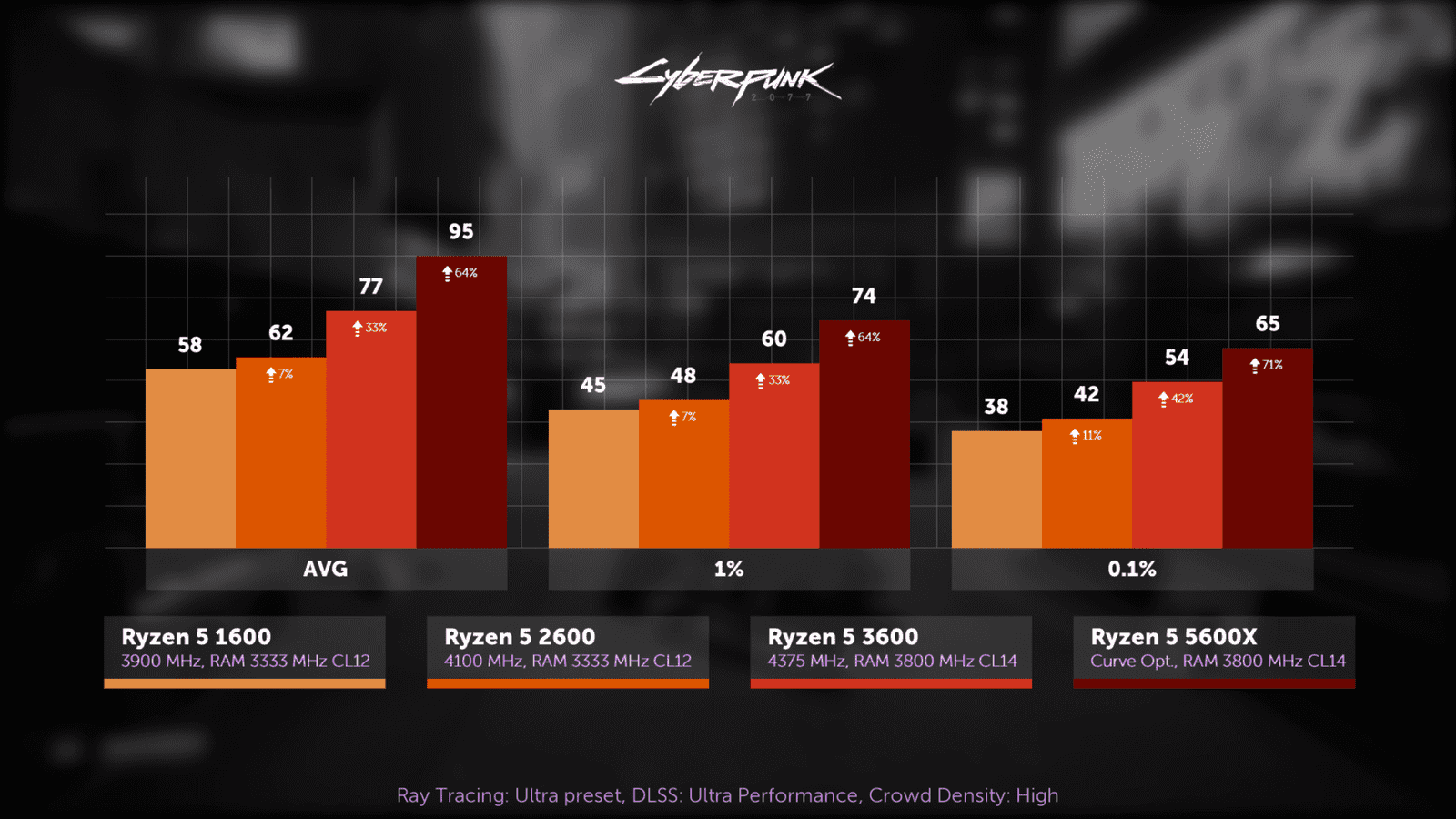
Differences appeared in the chest. 2600 increased all indicators again by a third, but other processors are lagging behind. In 1600 and 3600, the increase from overclocking varies in the region of 27-28%, while in 5600X it is the least – 25%. But even so, the differences in sensations between the processors have not changed. Between 1600 and 2600, although the difference has grown, it is still incredibly difficult to distinguish them without monitoring, and 3600 and 5600X are still far ahead.
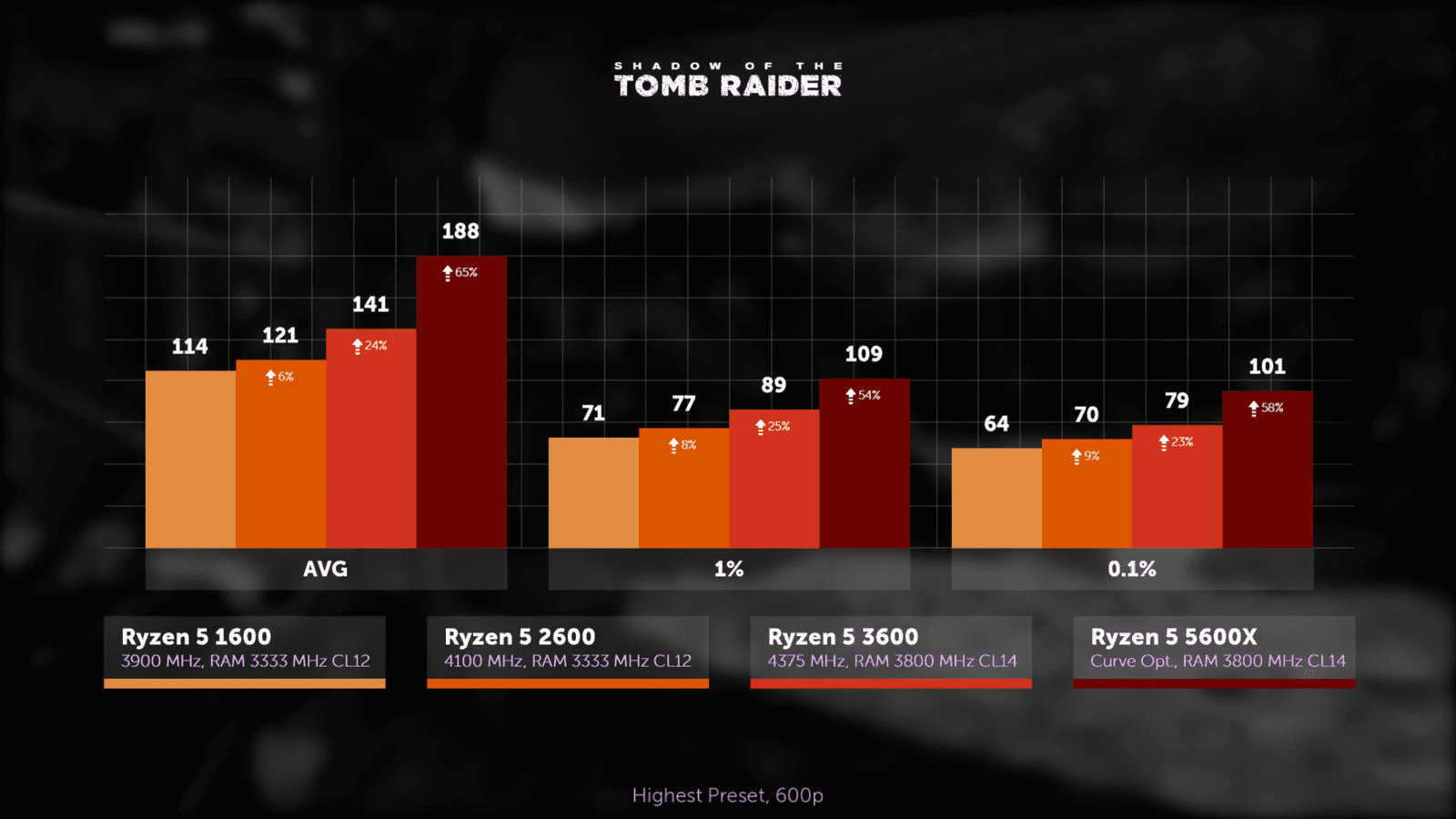
The situation is similar in dogs. 2600 began to prepare a third more frames per second, and for the rest of the ryzens this figure increased by a little more than a quarter, but even so, the gameplay on the 1600th, like in cyberpunk, became much more comfortable.
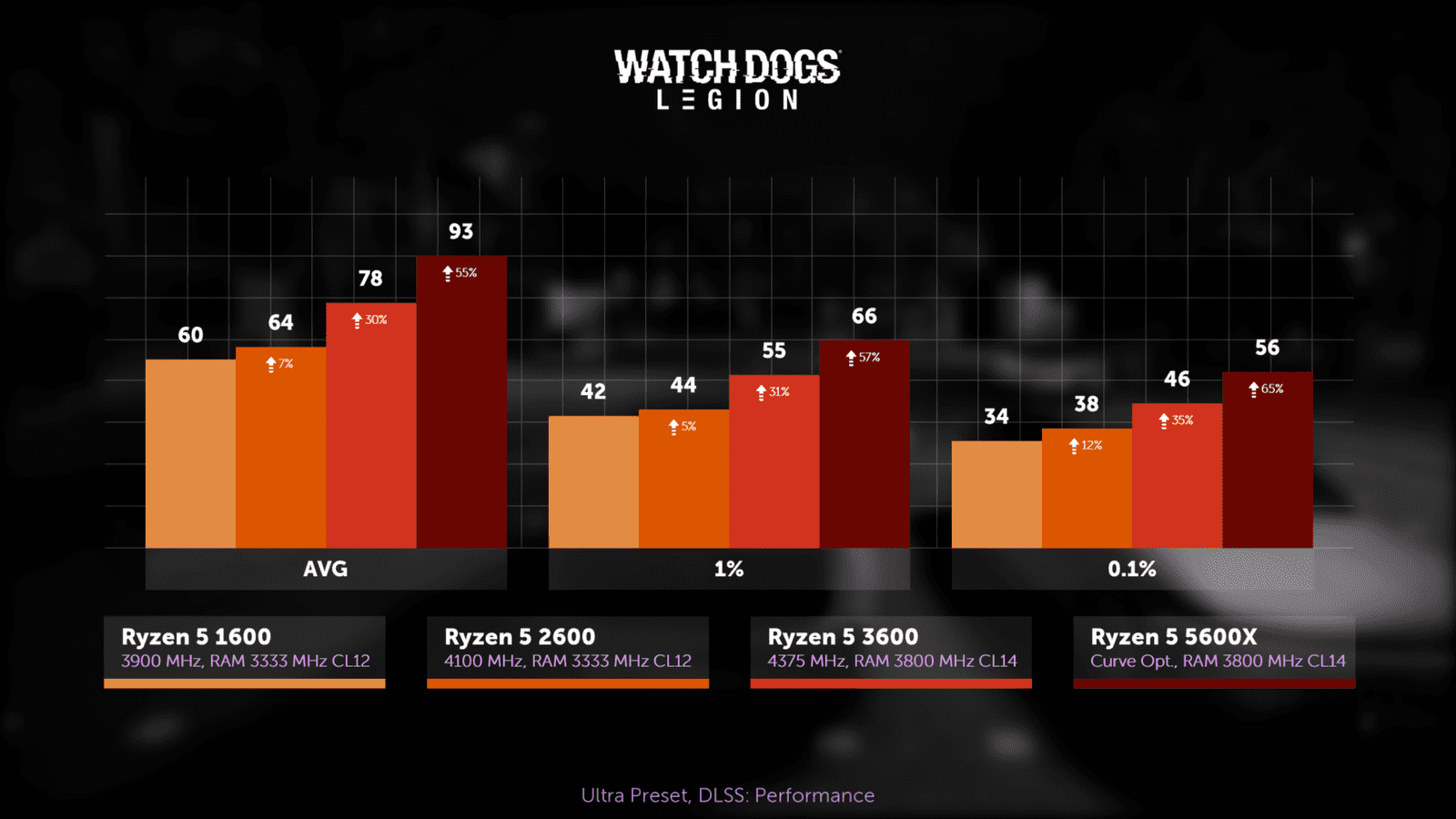
But in StarCraft, the balance of power has leveled off a bit. 1600 received the largest increase among all participants. Its FPS increased by 27% compared to stock, in 2600 – by 24%, 3600 – only by 20%, and 5600X accelerated by only 15%. That is, the voluminous solid 32-megabyte L3 cache could just have an effect here, and the frequency of its cores has grown nothing at all.
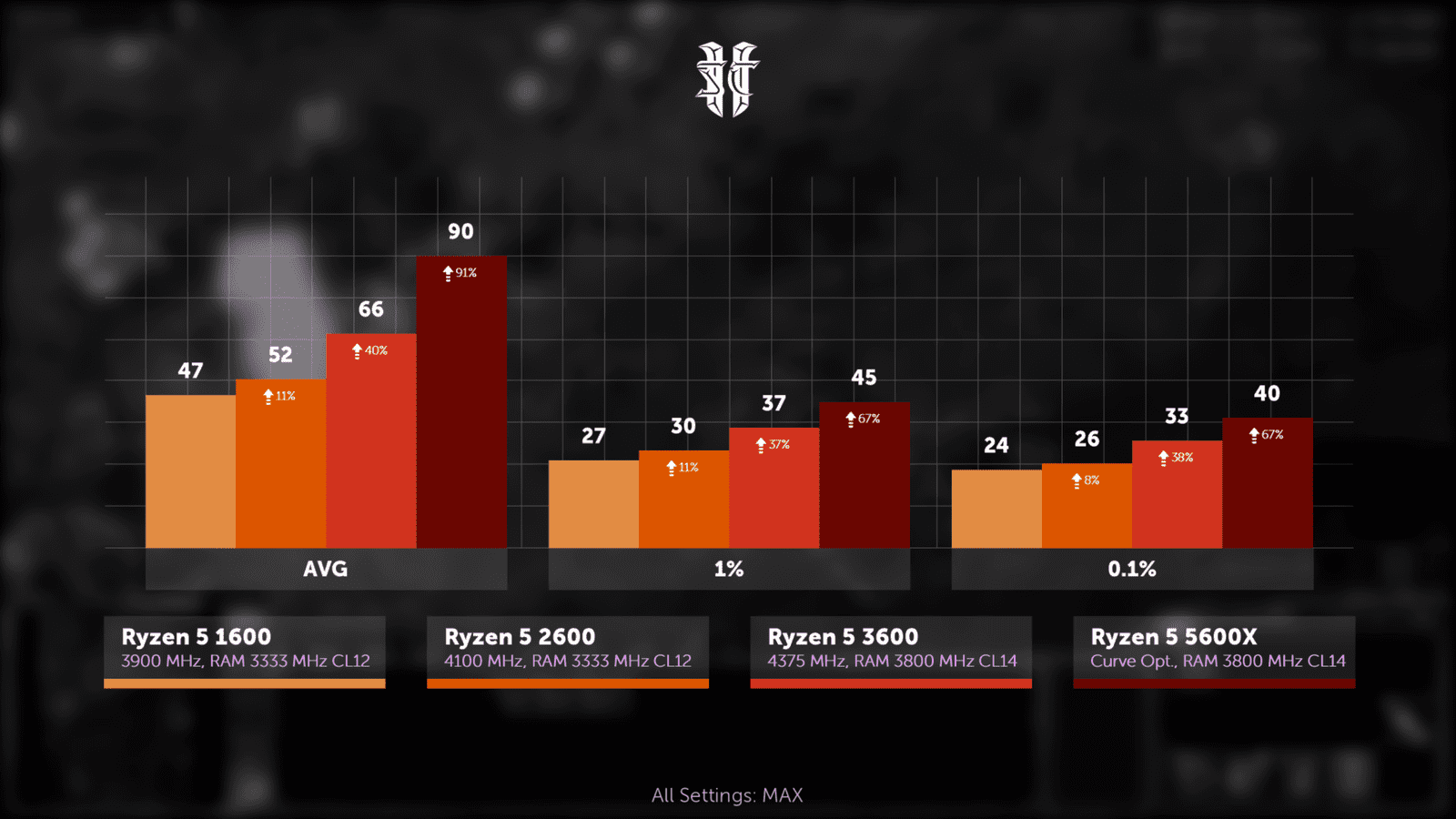
In Troy, the results are similar to lara and dogs. 2600 increased its fps by 30%, and the rest by a quarter. Temperatures have also risen markedly. Previously, in 1600 and 2600, they were in the region of 40C, and now they are about 60. This is far from the limit, which quietly allows you to use ordinary four-pipe towers for cooling, as long as the case is ventilated. 3600 and 5600X are 10C hotter, and something simpler than the above-mentioned coolers will not be enough for them, or you will have to change overclocking to a less aggressive one.
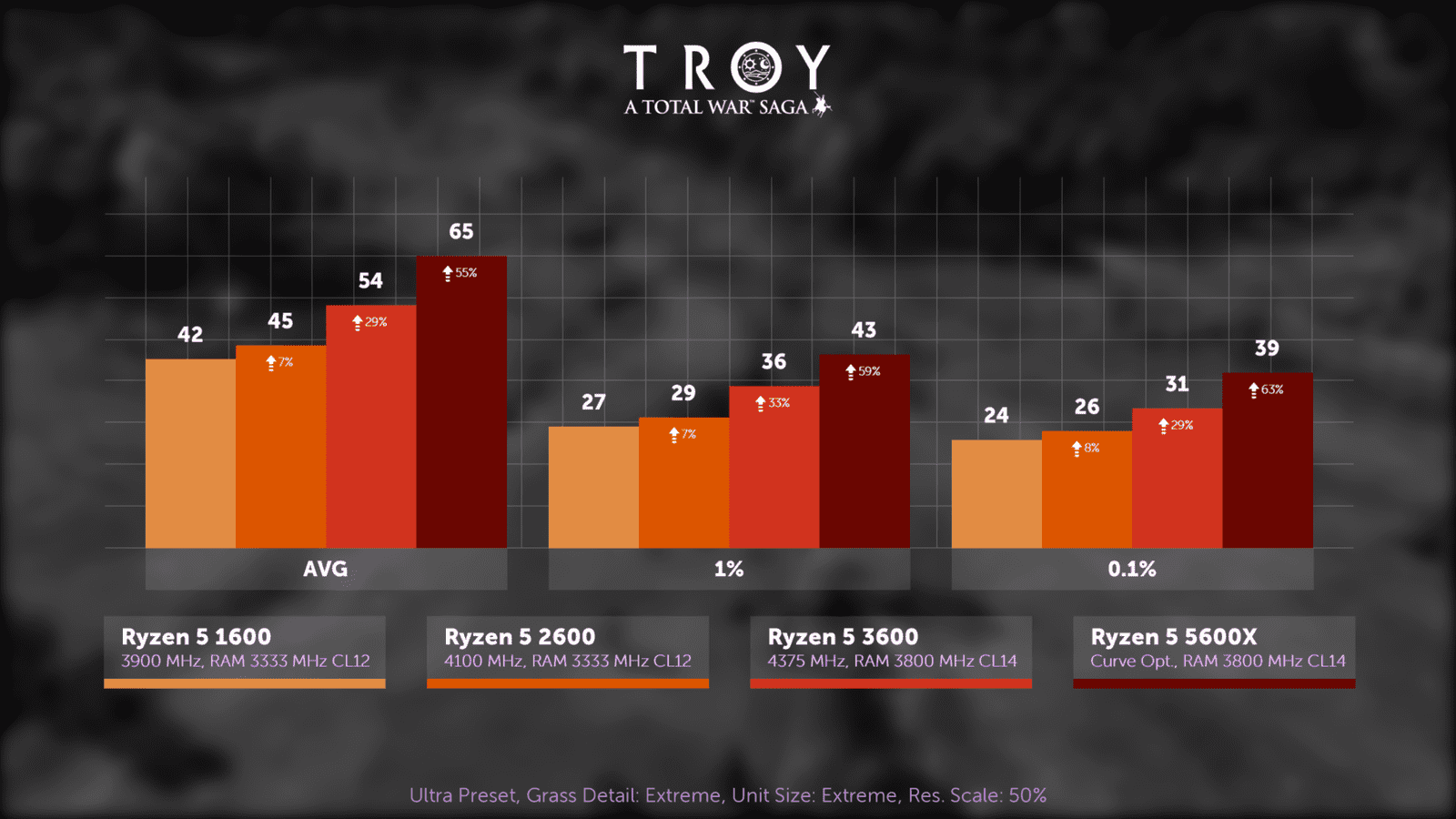
The most interesting event happened in counter. The 5600X did not benefit from memory overclocking. His fps increased a little thanks to the whore settings, but no more. That is, we can assume that the misses in its large cache have come to naught. However, judging by the fact that in multi-threaded games overclocking gave about the same numbers as 1600 ryzen, the amount of cache for modern massive games is so small for modern massive games that misses happen all the time. Here, as in Starcraft, 1600 received an increase from overclocking as 2600 and 3600 combined – 25%. Their FPS increased by 12 and 13% respectively, which again reduced the difference between 1600 and 2600 to a minimum.
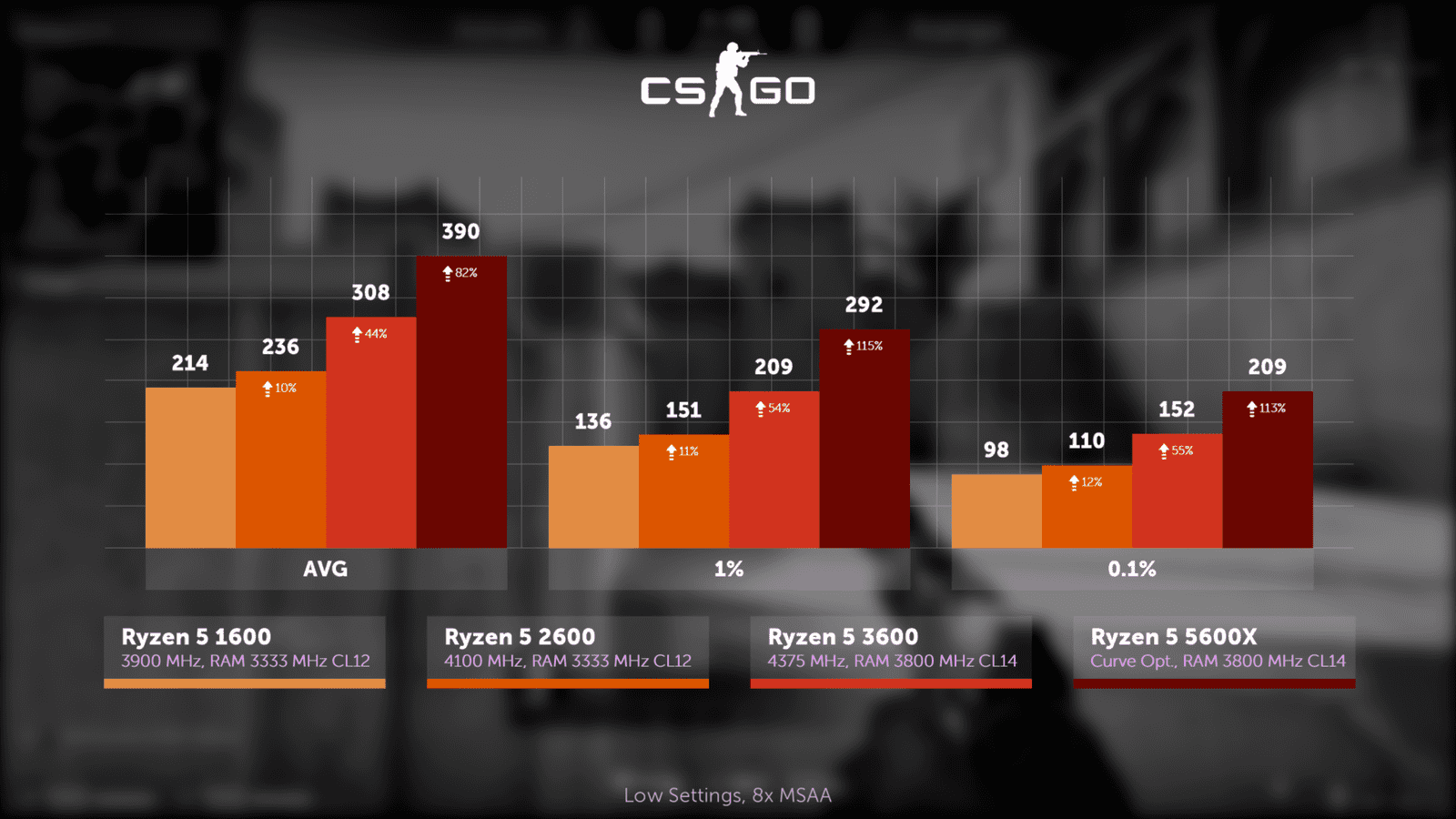
We go back to the ward with average values and see that nothing has changed much. Yes, the 5600X is now 69% faster instead of 79% on average, but it’s still a huge difference, and the first two generations are still less than 10% different, except that now their gap has become more even from game to game, and in overclocking it is almost impossible to distinguish them even in Starcraft and Counter.

GPU Focused Benchmarks
These were tests without emphasis on the video card. In such conditions, the 3600 and 5600X are head and shoulders above their ancestors, but in many story single games, the emphasis is on the video card, whatever it is. And by adjusting the FPS to the value of “at least 60”, only the resolution and preset settings change. What are the differences in this case?
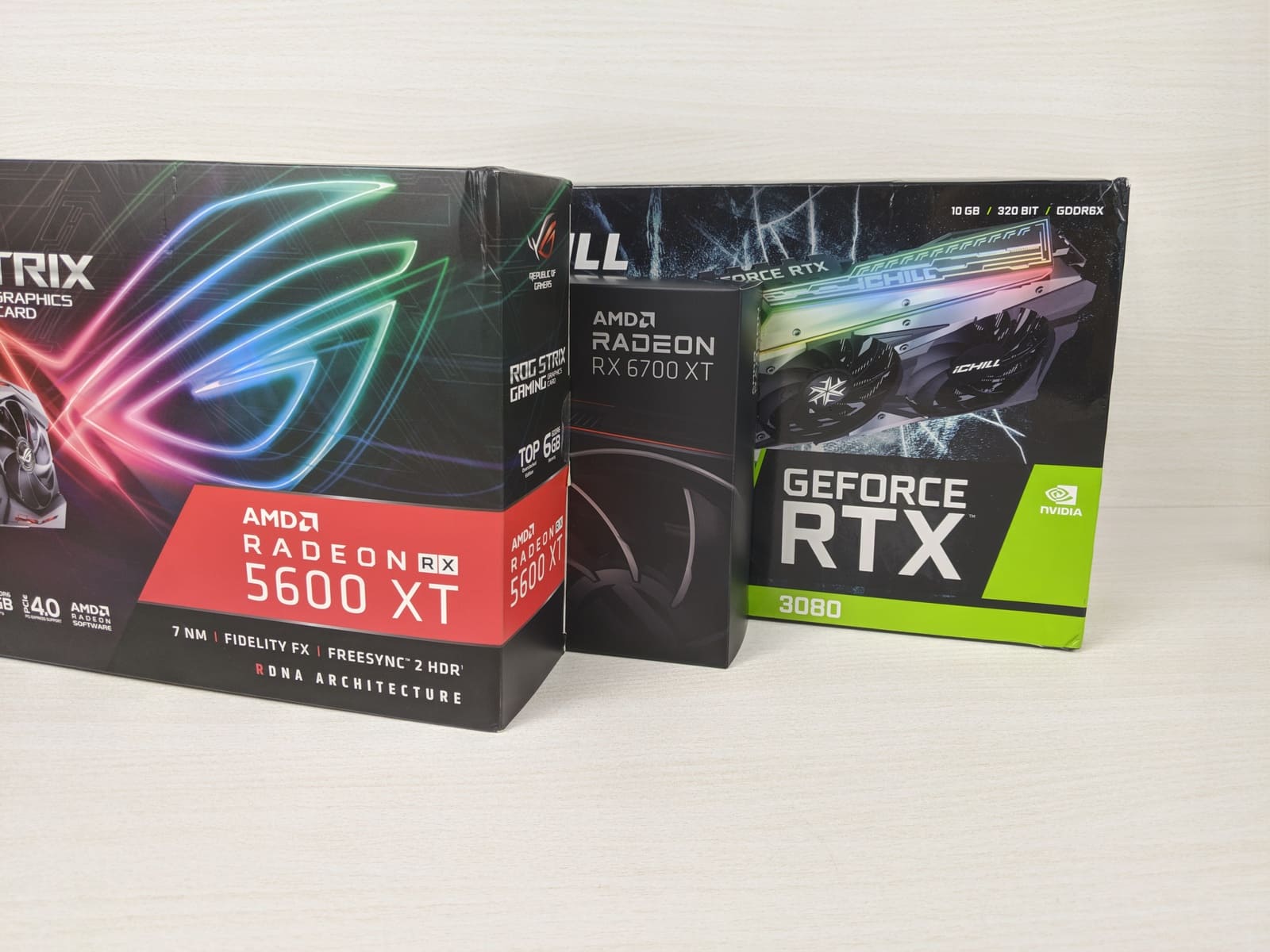
Indeed, starting from the 3000 series, resizable bar and PCI Express 4 versions became available. Let’s quickly run through three games, leaving the RTX 3080 in the booth and the processors overclocked.
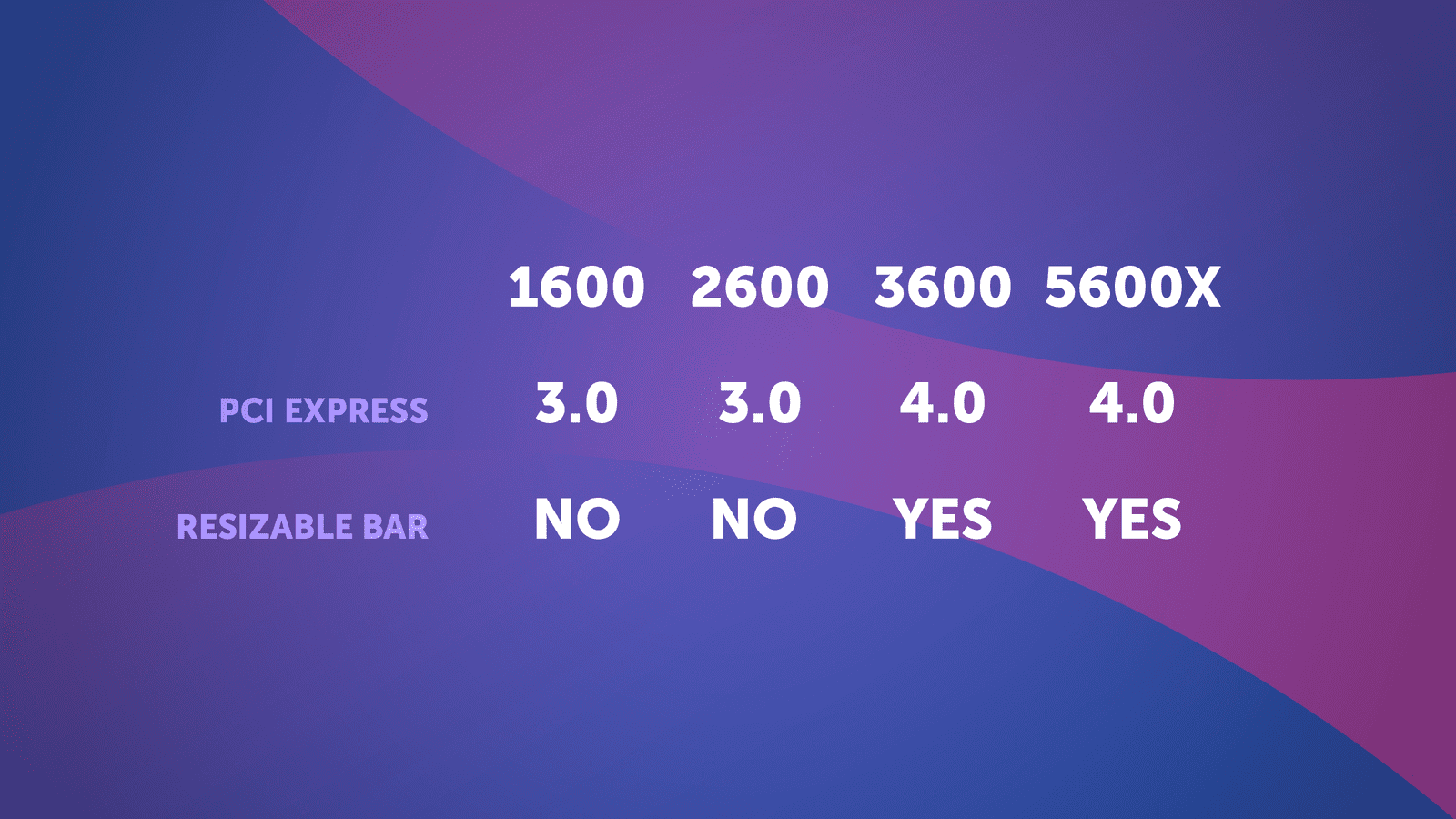
In cyberpunk, we change the resolution to 4k, the settings preset to the penultimate one and the dlss to performance. We will also change the scene to the night one, it has higher requirements for the video card and less for the processor part. Here the Resizable Bar gives a boost, which is seen between the risers in the center.
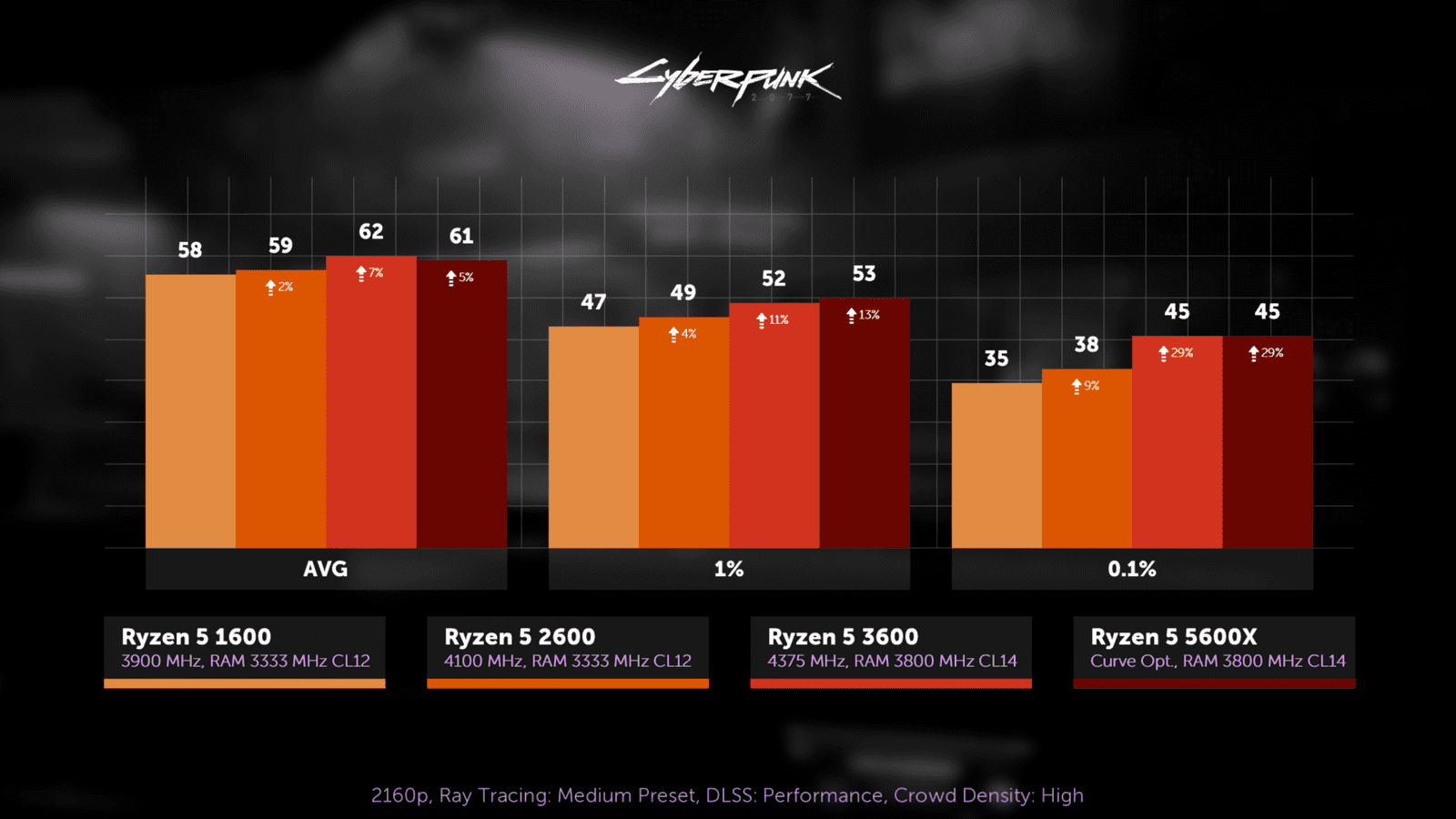
DOOM Eternal, graphics preset – ultra nightmare, 4K. All the same. The Resizable Bar gives the minimum difference in average FPS, but in addition there are differences in the amount of stutters during automatic saves, which is why the smaller 0.1% differs. Is this a reason for an upgrade? Of course not.
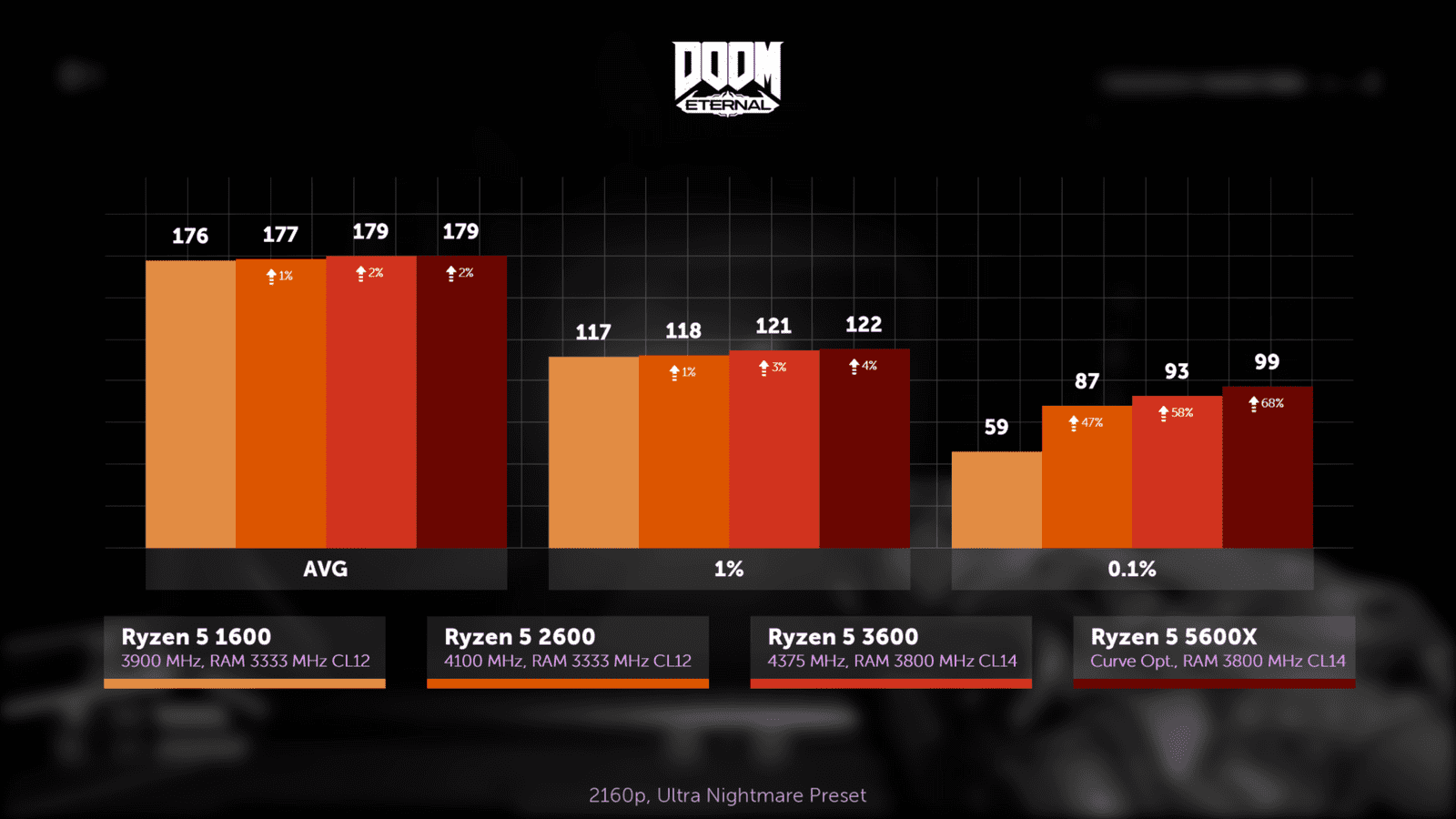
Resident Evil 8, the maximum graphics preset will be seasoned with an average RTX level, the resolution is still Ultra HD. Here, the Resizable Bar does not give an increase, which reduces the already intangible difference to nothing. That is, for those players who are content with 60 fps in single games, whether it be 1060 in Full HD or 3080 in 4K, there is not much difference. It will appear only in very demanding games up to the processor, in the stock state, or if you want to achieve more than 60 fps. As for the lack of Resizable Bar and the obsolete PCI version, today the loss is small. And the desire to unscrew the settings to the maximum is sometimes absurd.
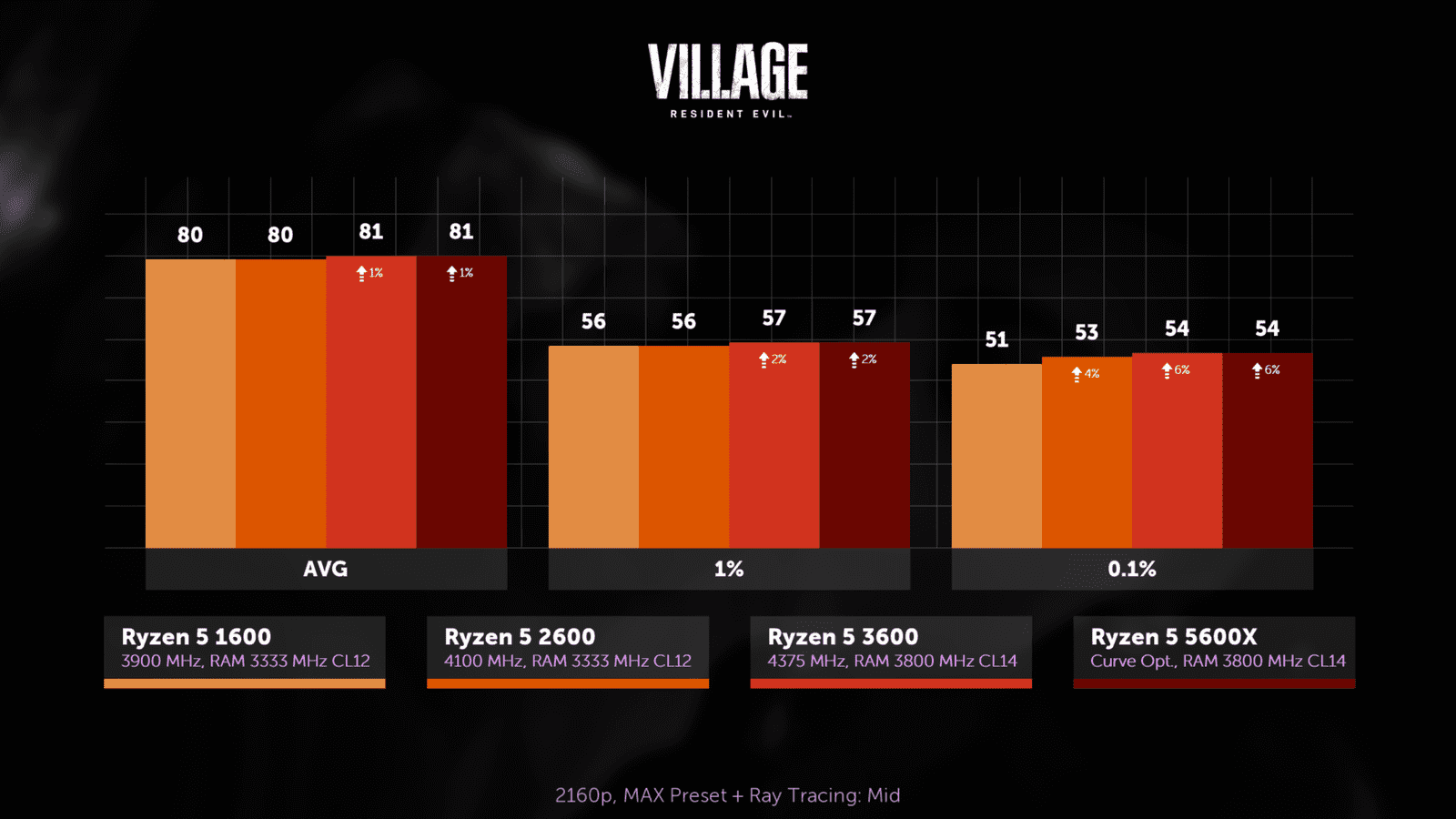
Look here: one half has a trace, but the other does not. Try to guess in the comments where it is and why you think so. And we’re moving on to the last part.

Let’s compare processors at equal frequencies and voltages. This is not an IPC comparison, but mostly overindulgence, but it’s interesting how much performance has increased ceteris paribus, and what’s with the temperatures.
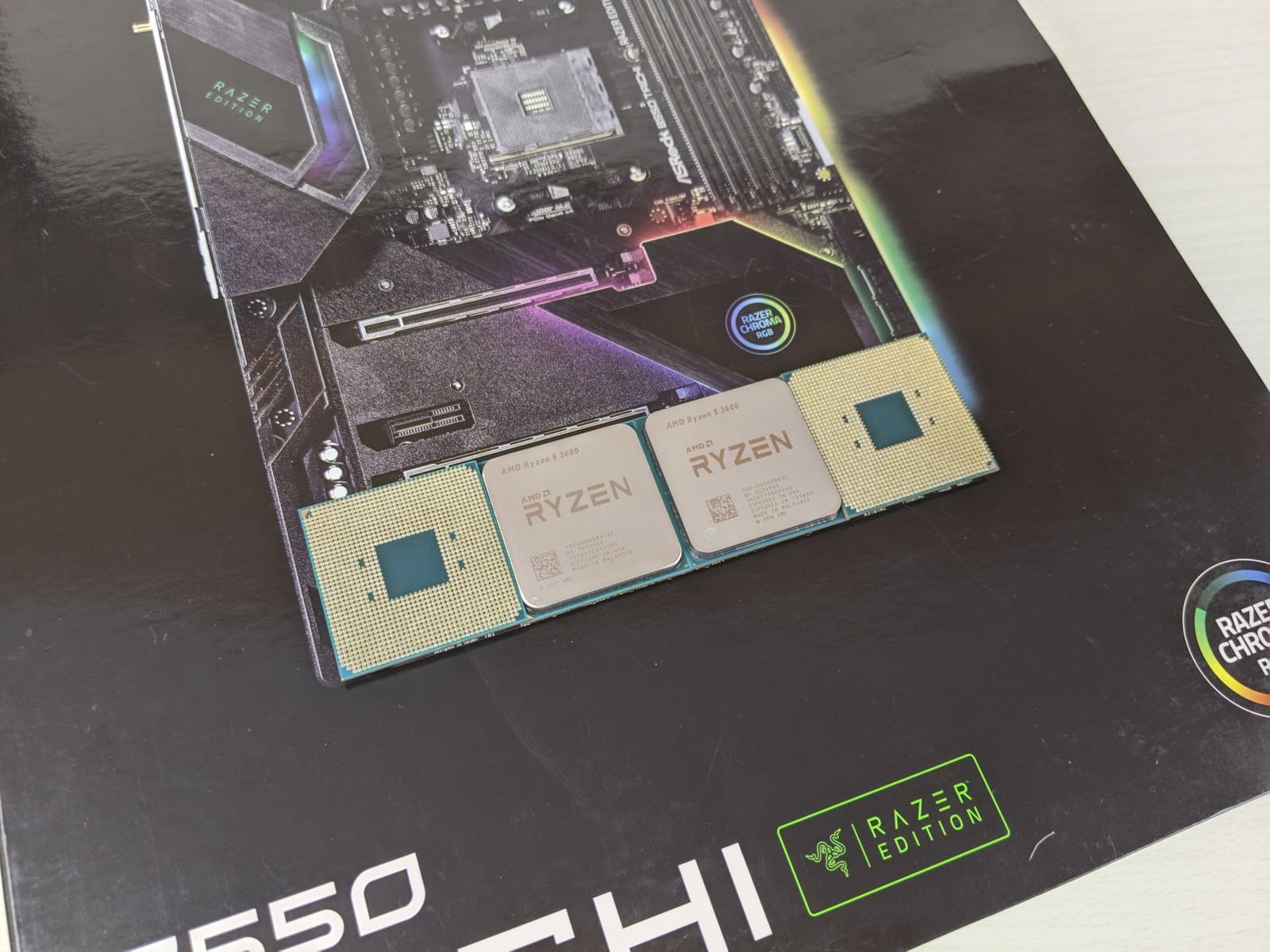
For example, in the bluebench, the ryzen 2600 still scored more points than 1600, and what is most curious is that in multithreading, all processors have a greater lead, as if the work of SMT has also improved with each generation, but we do not dare to pass off our fictions as truth. There are dozens of reasons for this behavior.

In geekbench, on the contrary, in multithreading, the difference is less, but here it is easily explained by slow memory and algorithms for calculating the points of the test itself.
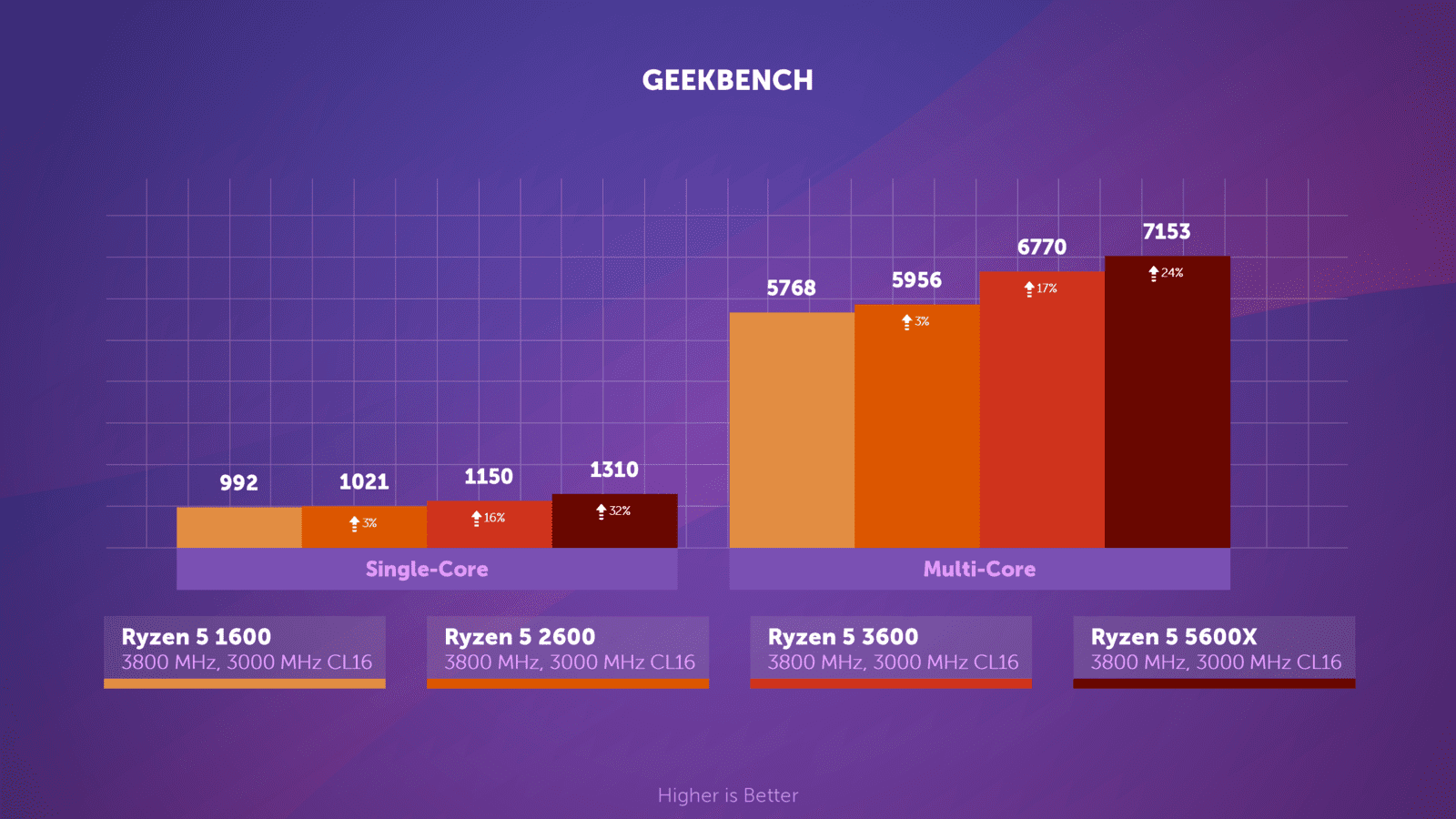
CPU-Z turned out to be the most amorphous, here 1600 and 5600X differ in multithreading by only 16%,
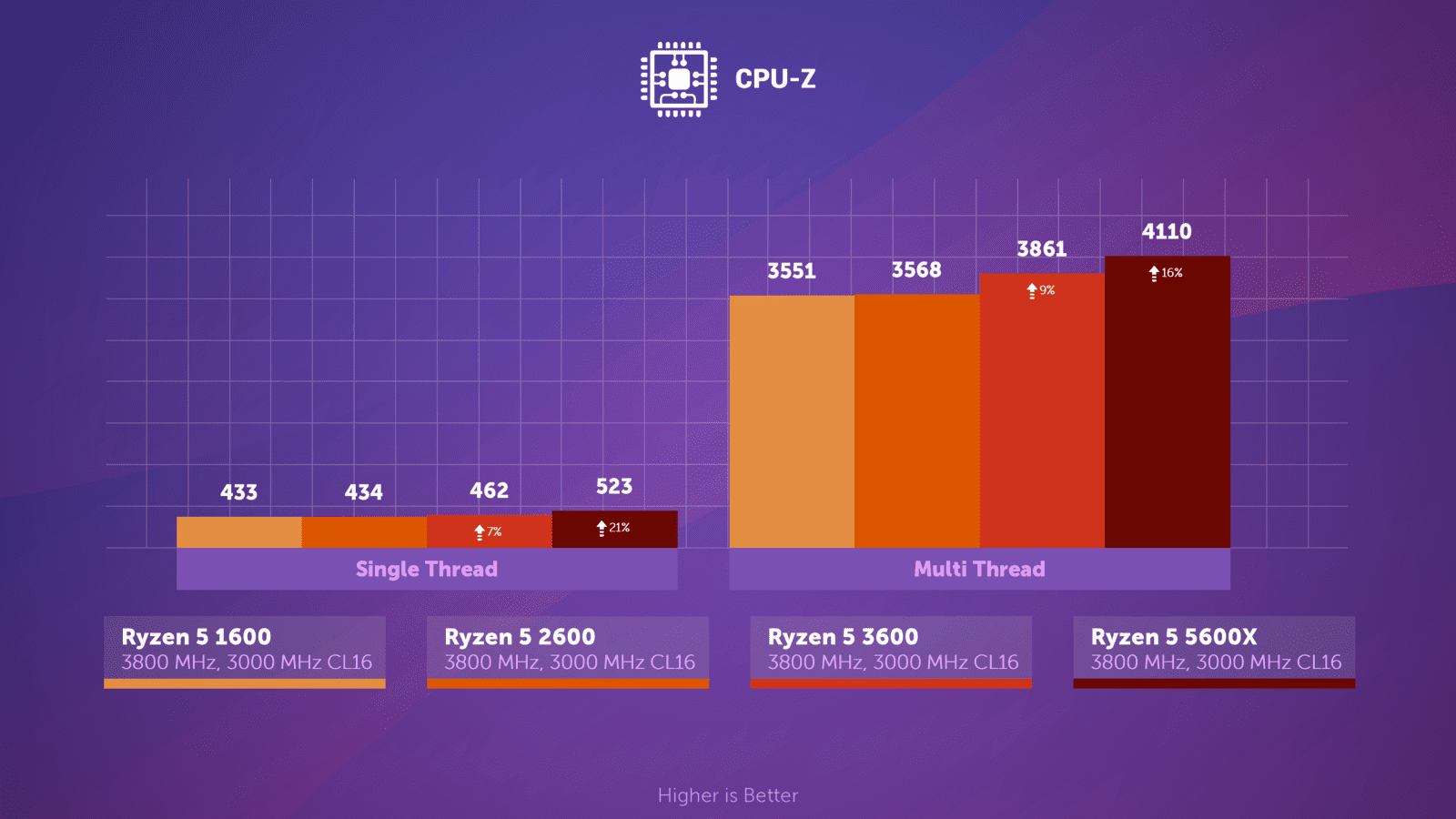
But in the Coro benchmark subtest, the 3600 blender still demonstrates a huge lead over its ancestors.
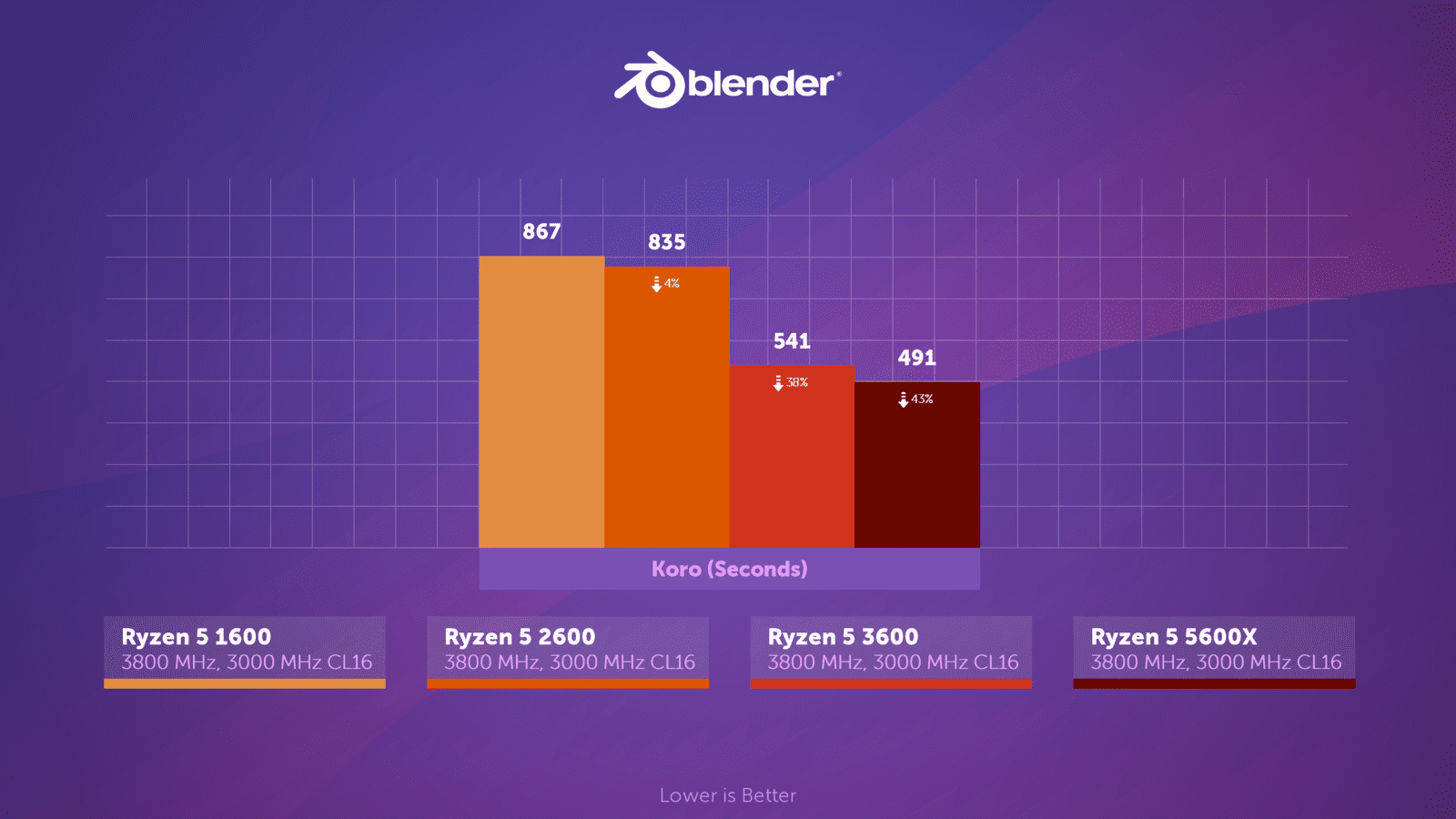
In Aida, memory latency is unchanged, but the equal frequency made it clear that the cache speeds are the same for both zen with zen +, and for zen 2 with zen 3.
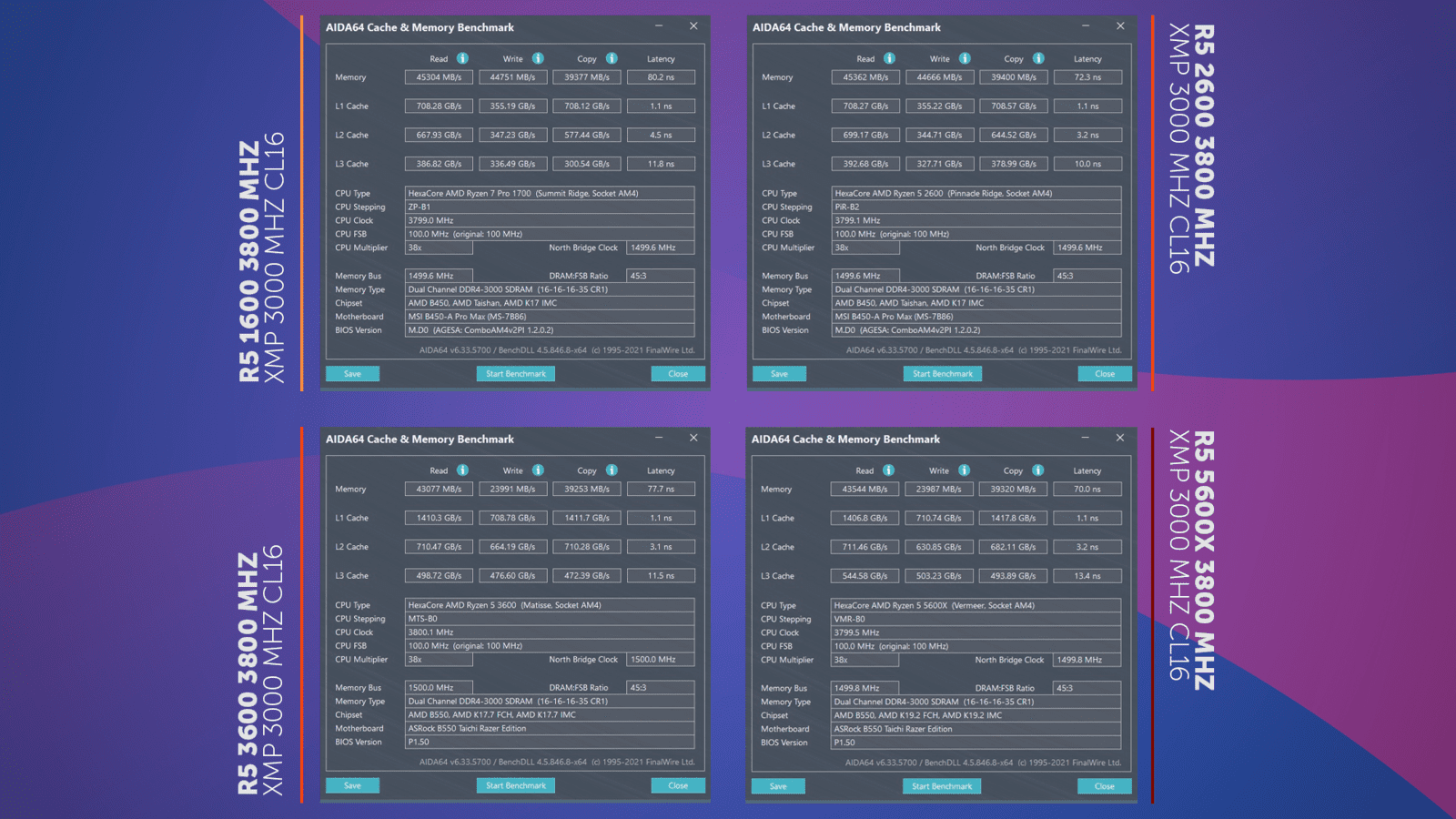
Let’s also take a look at the top three games to see how they were affected by microarchitectural improvements without taking into account the change in frequency.
For example, in Watch Dogs, the stock 5600X outperformed the 1600 by 57% in average FPS, and now only by 45%. And what’s funny, reducing the frequency of the cores by about 800 MHz led to the loss of only three frames on average, that is, a drop of 4% FPS, which is generally ridiculous.
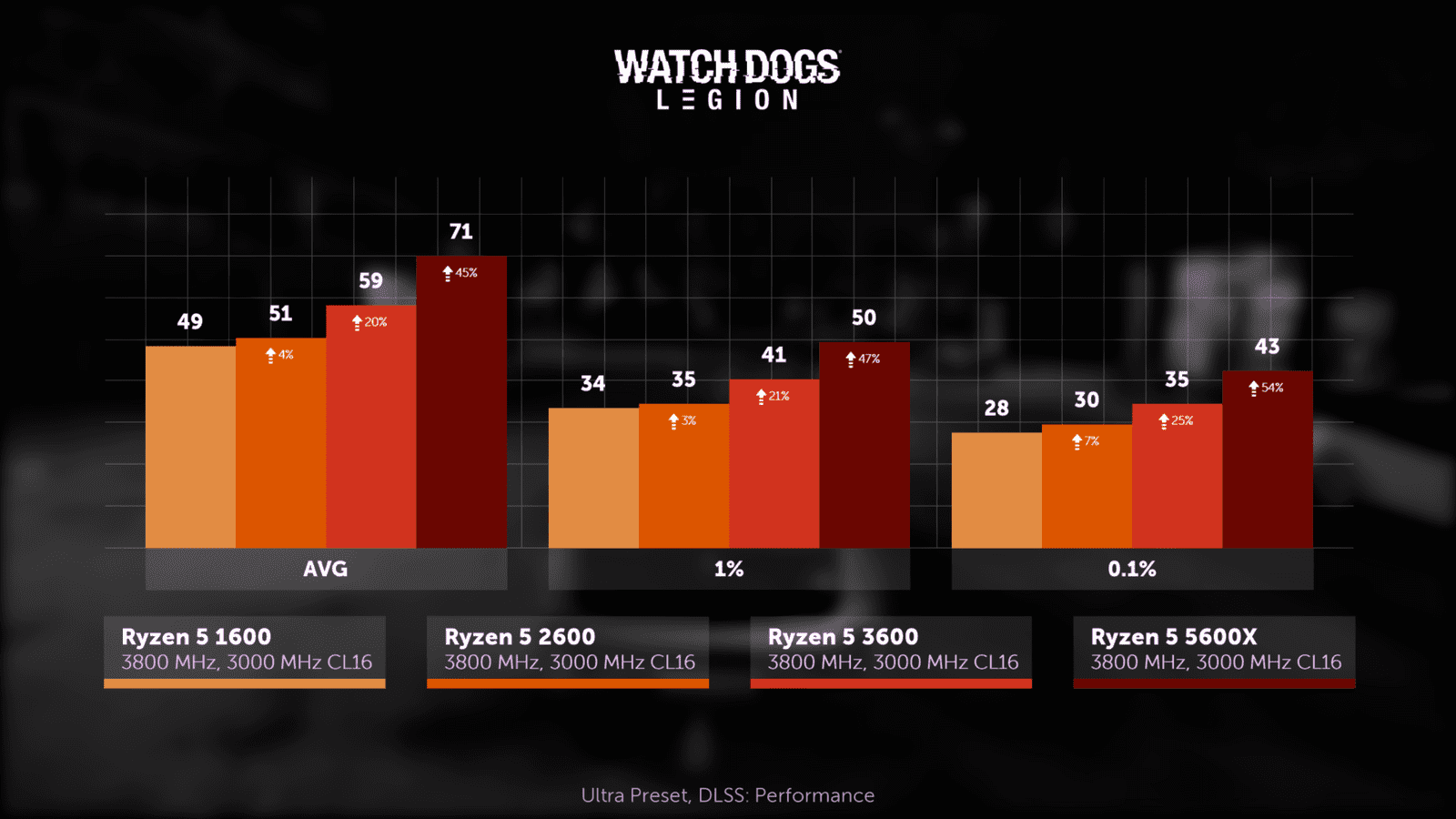
But in StarCraft, instead of 78 fps, we got 62 on 5600X. Which corresponds to a 20% drop in core frequency. Well, the 5600X now exceeds the 1600 by no more than 2 times, but only 1.5 times, which is also very commendable.
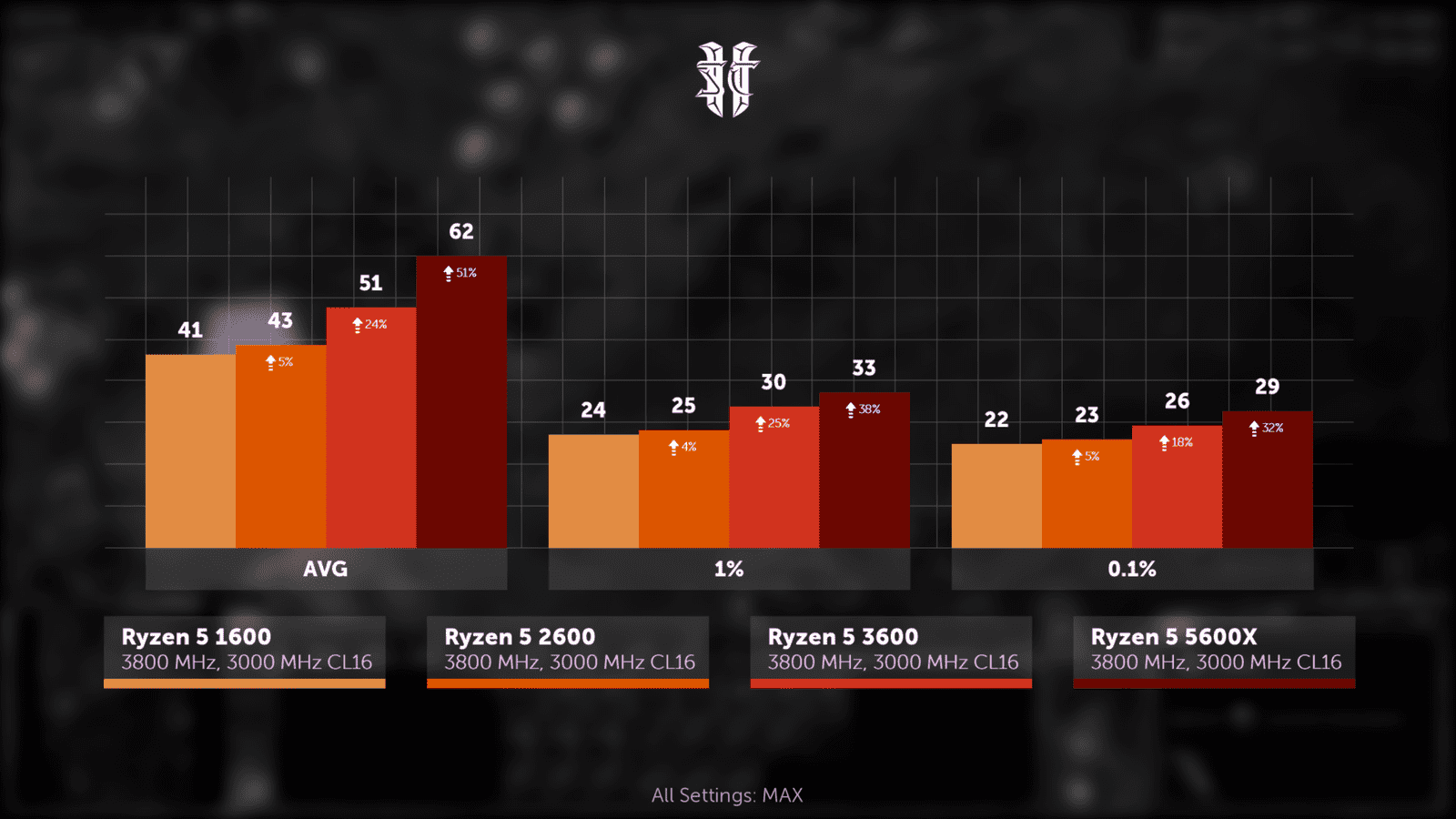
In three runs, the 1600 and 2600 are equal in average FPS, but in rare and very rare events, the refresh is ahead, and the 3600 and 5600X step identically in performance. At equal voltages, power consumption sensors show some kind of rubbish that is not amenable to analytics, but by temperatures it is quite possible to judge that the right processors are similar to each other in terms of core temperature at equal voltage, just like the left ones are identical to each other, but the transition to 7 nm is a priori significantly complicates the removal of heat from the crystal.

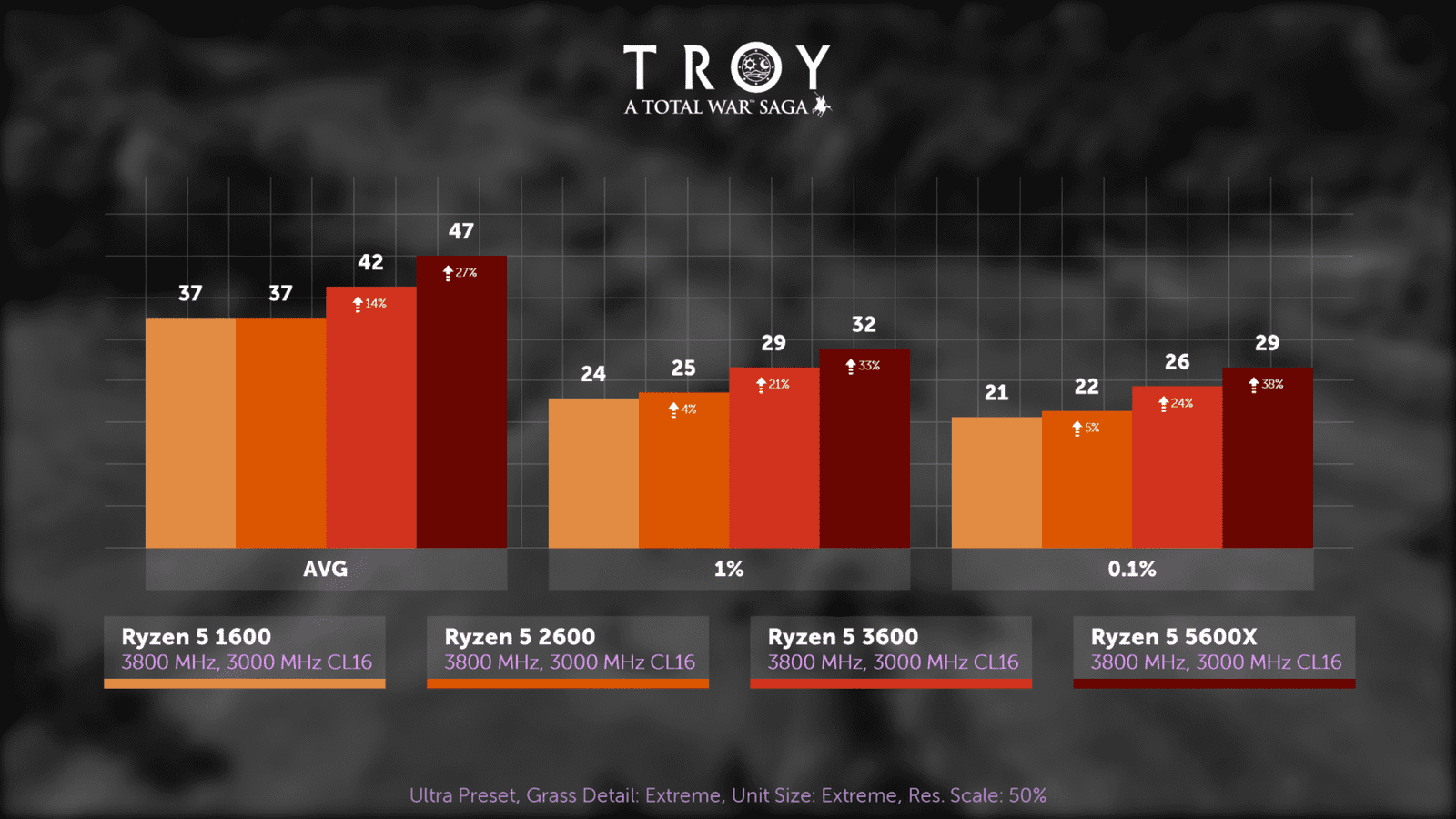
Conclusion
This is how the Ryzens progressed. The 2000s were only a small improvement over the 1st generation, and the 3000s made a huge breakthrough, a breakthrough. On the other hand, Zen 3, while remaining on the same process technology and socket, also made a great jump in performance, especially in terms of gaming, sometimes identical to that of the 3600.
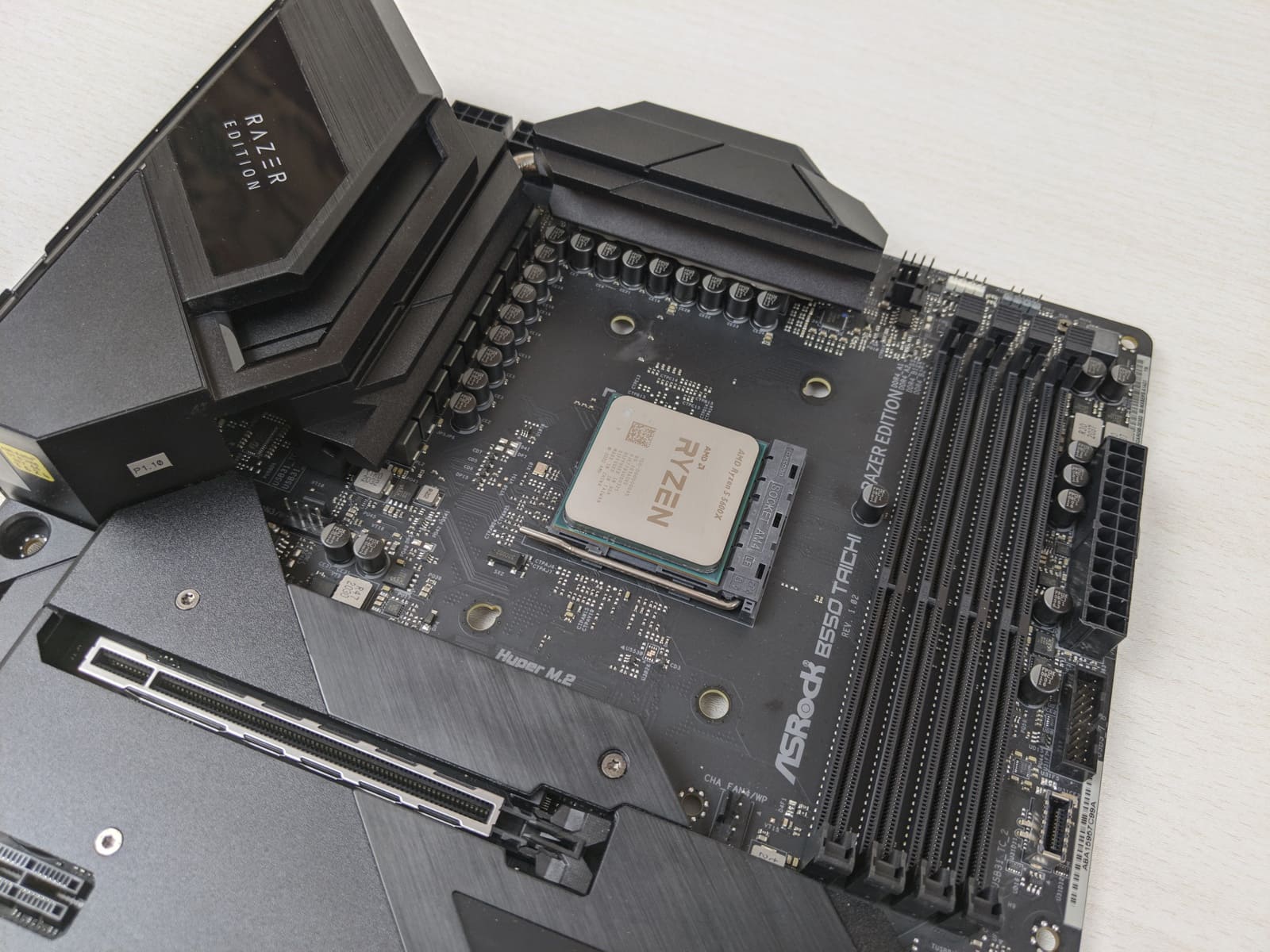
And before closing the material, share this in the comments: there is one among you who planned the upgrade, but after this video he changed his mind, and vice versa. Very curious to see your thoughts. Well, about the tracing in the resident, also try to guess.
That’s all. Thanks for reading. Do not be ill. And see you again.




